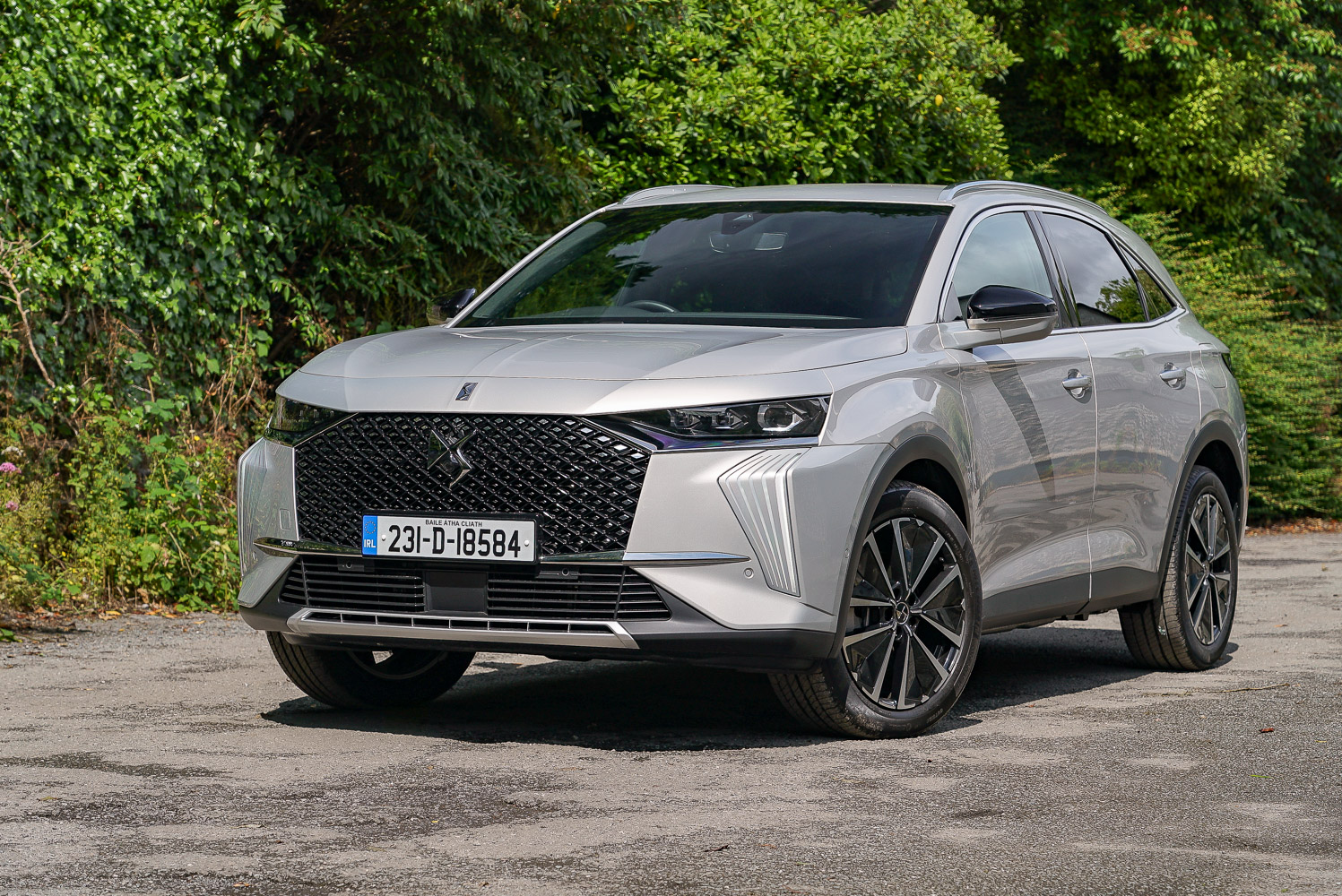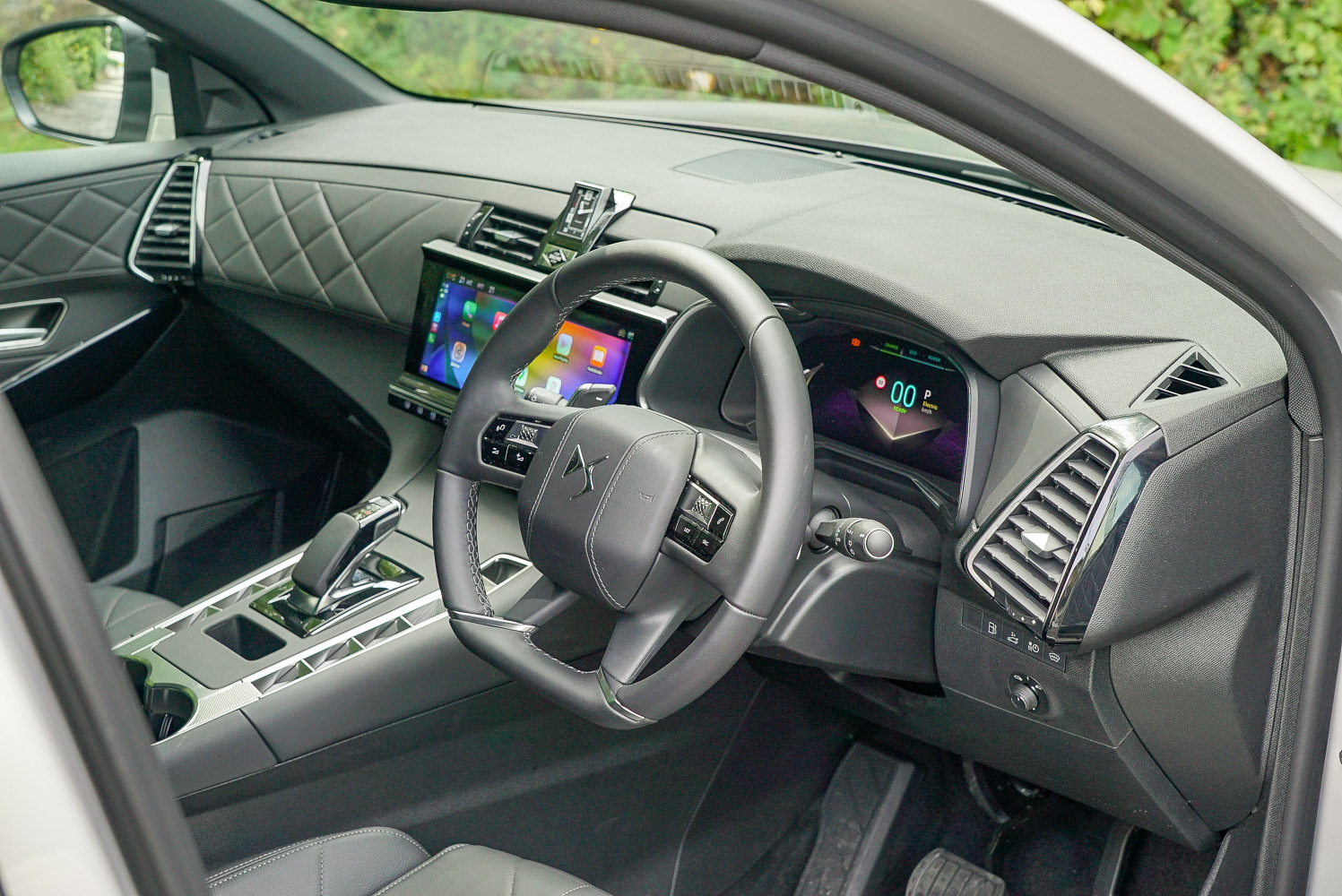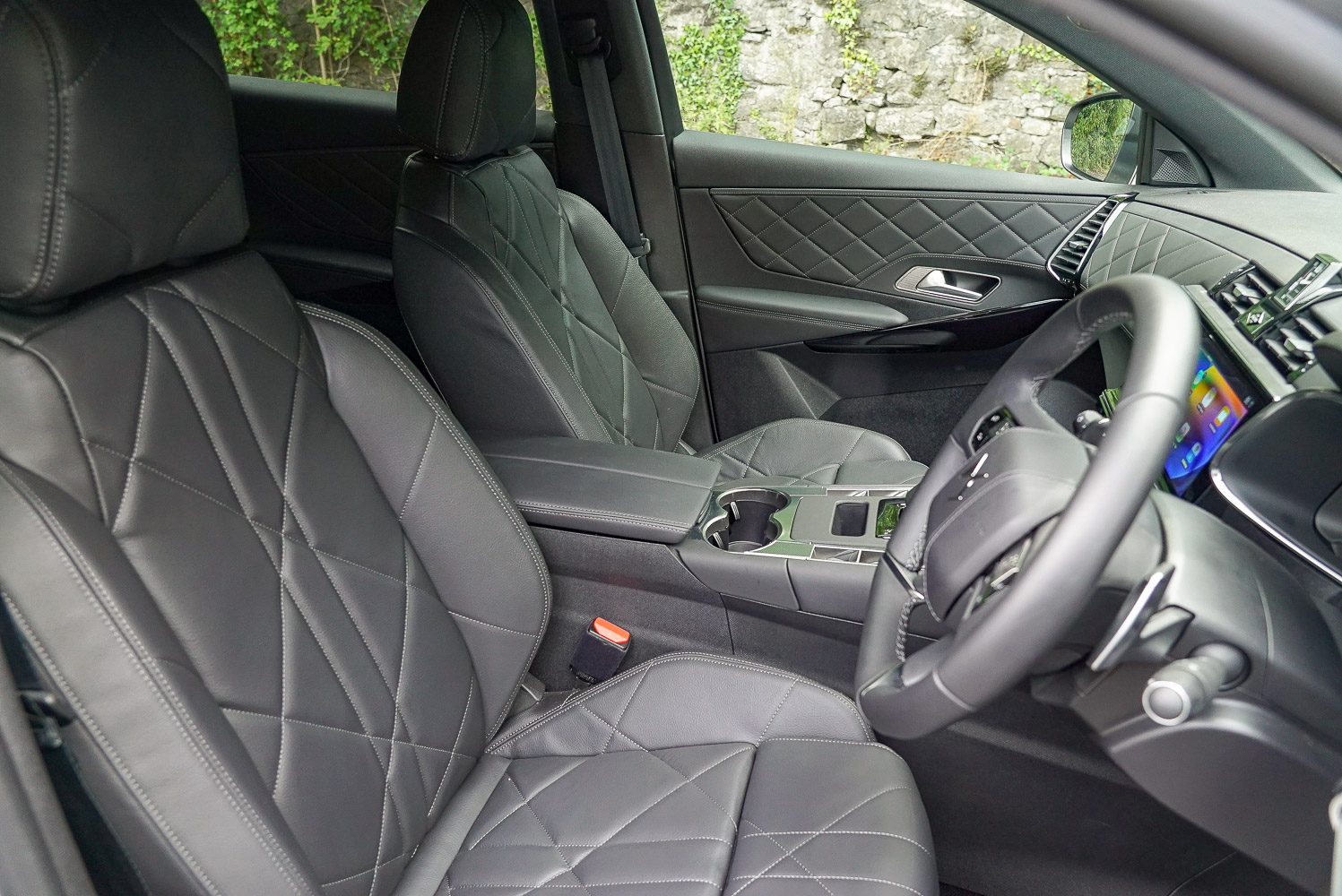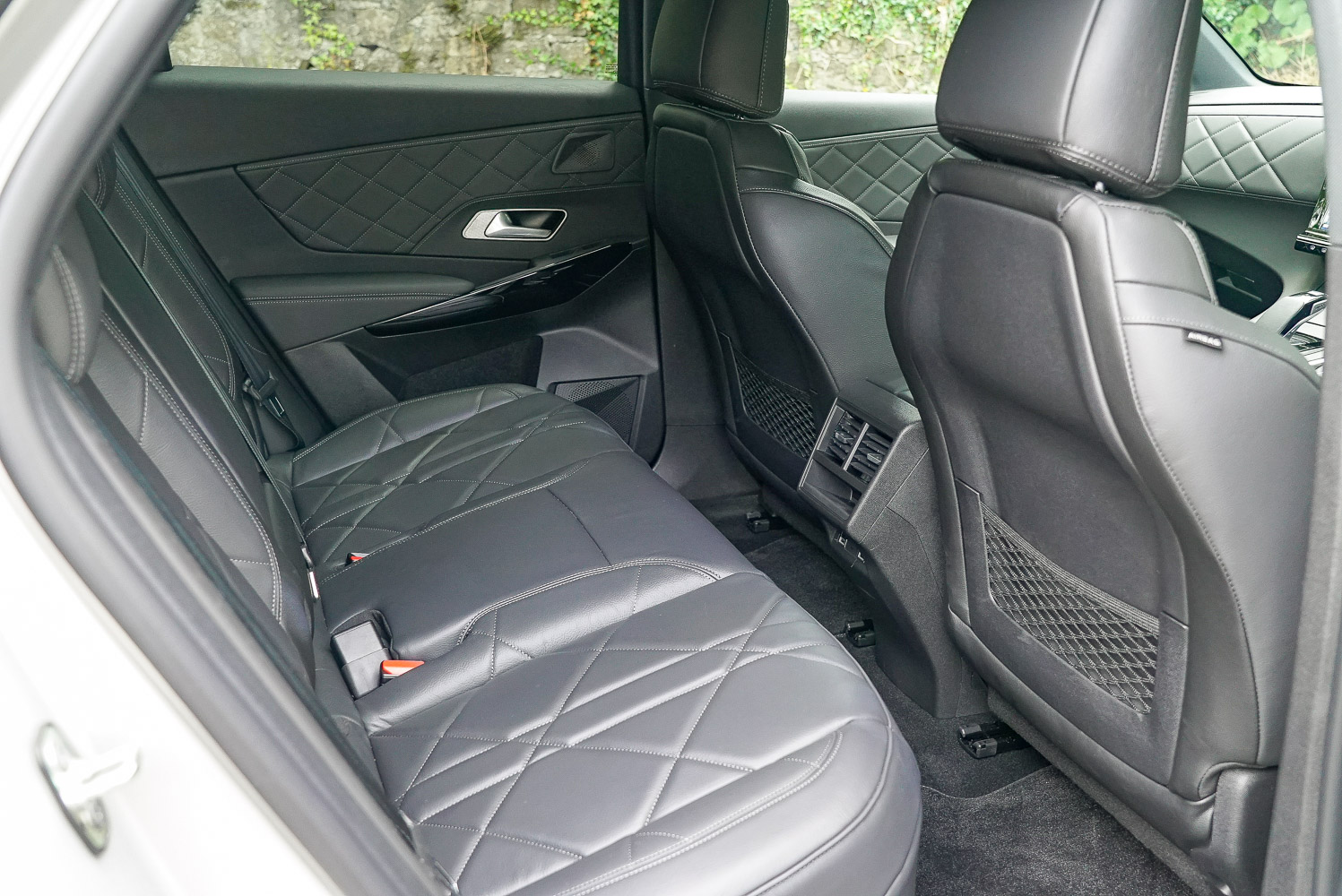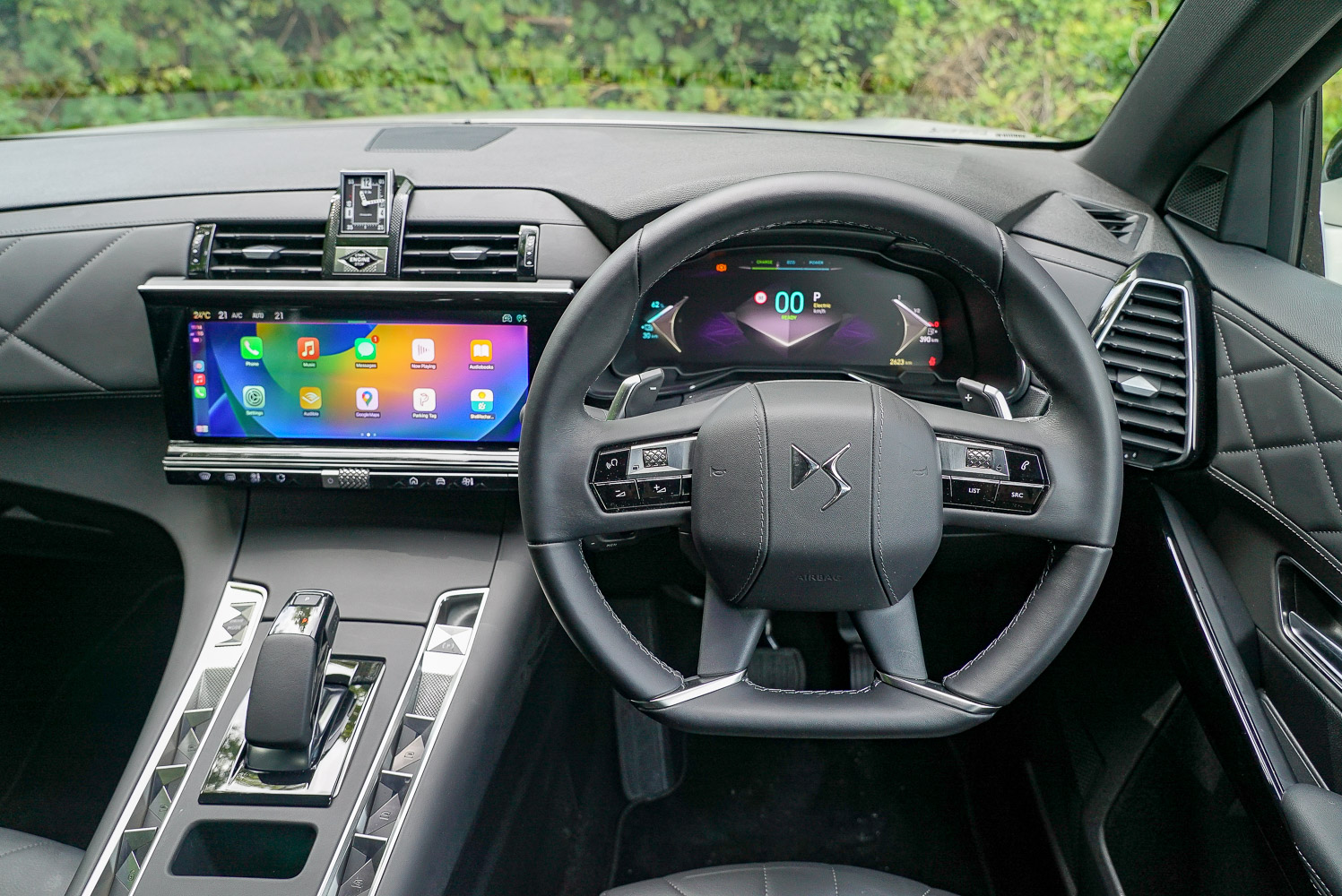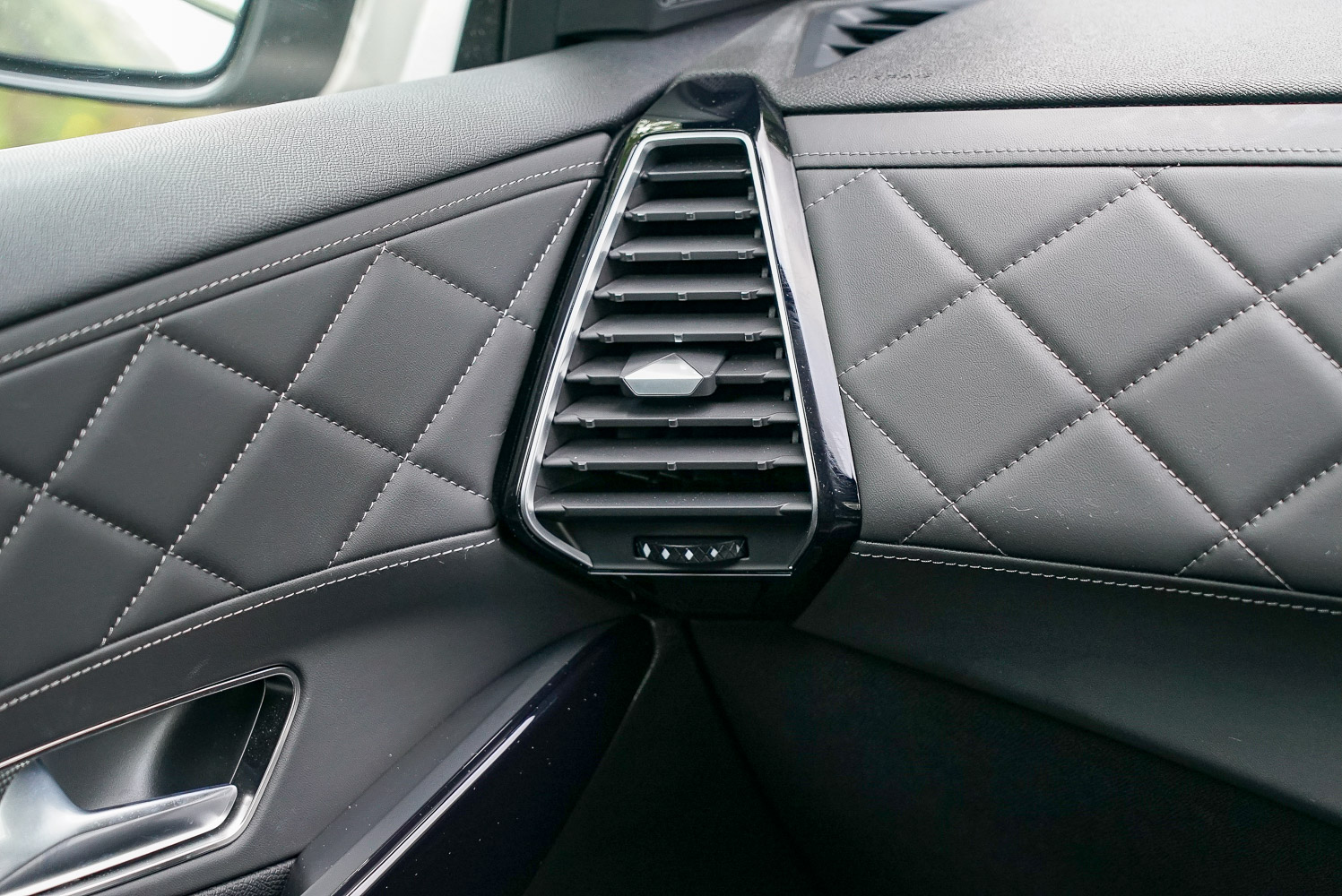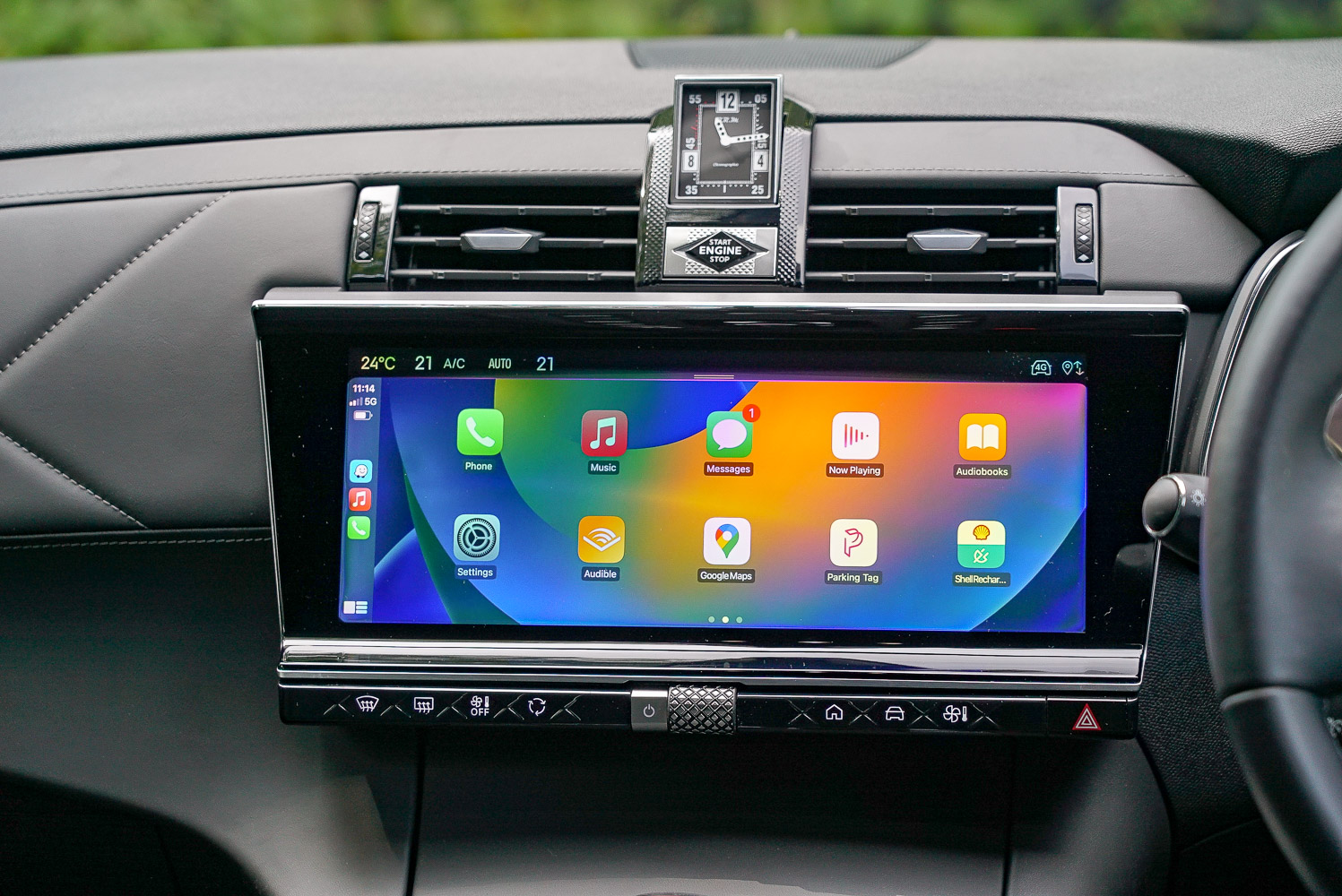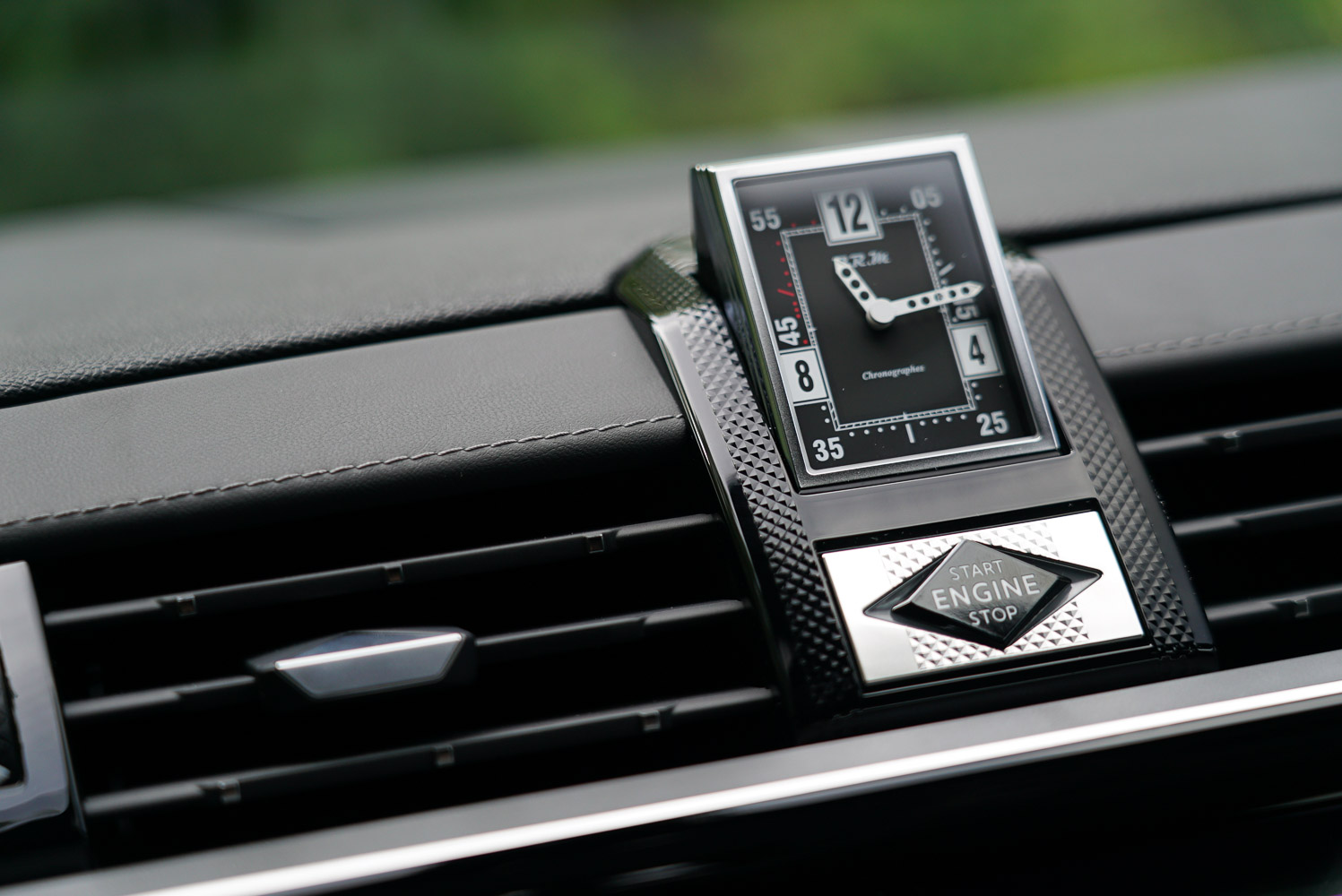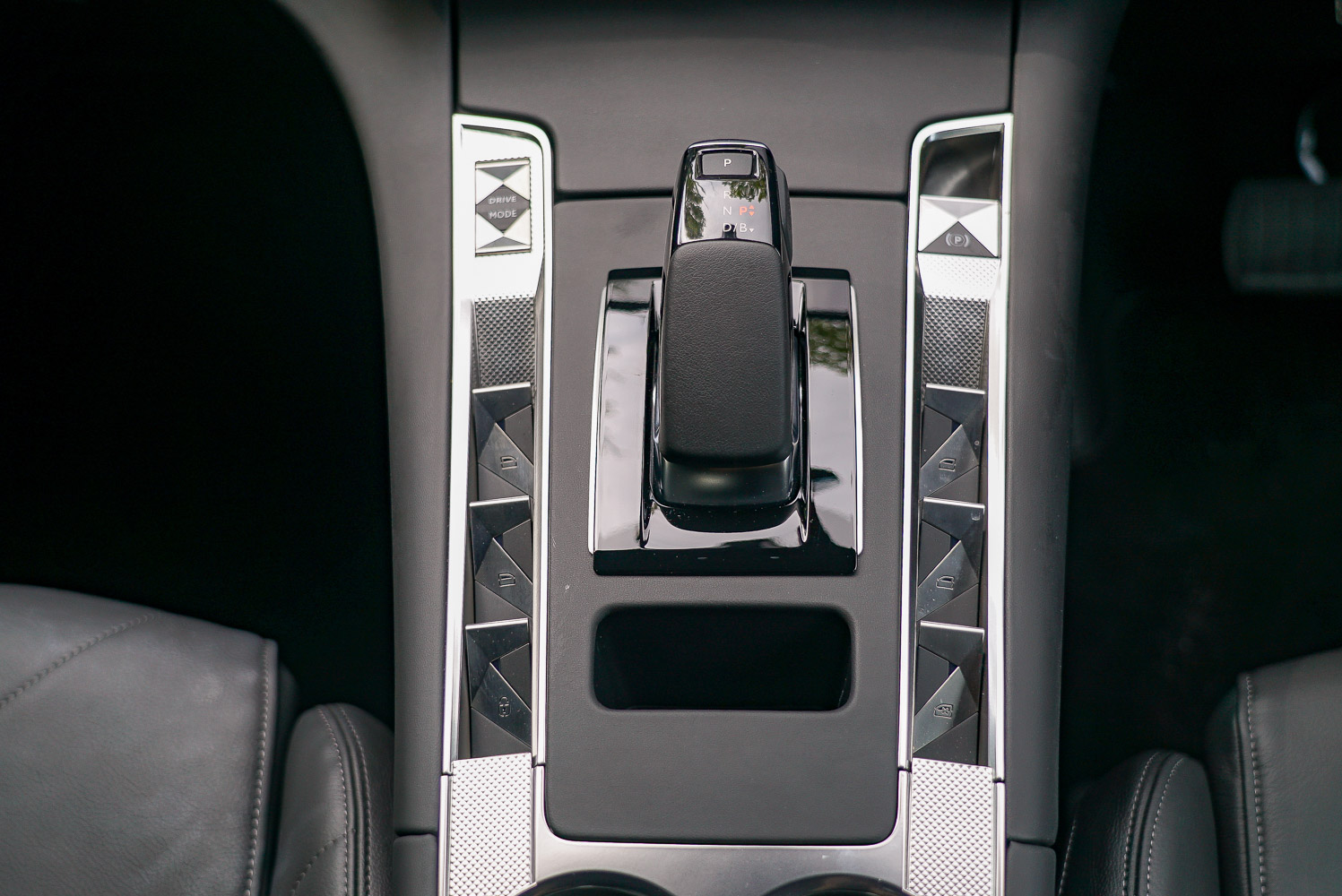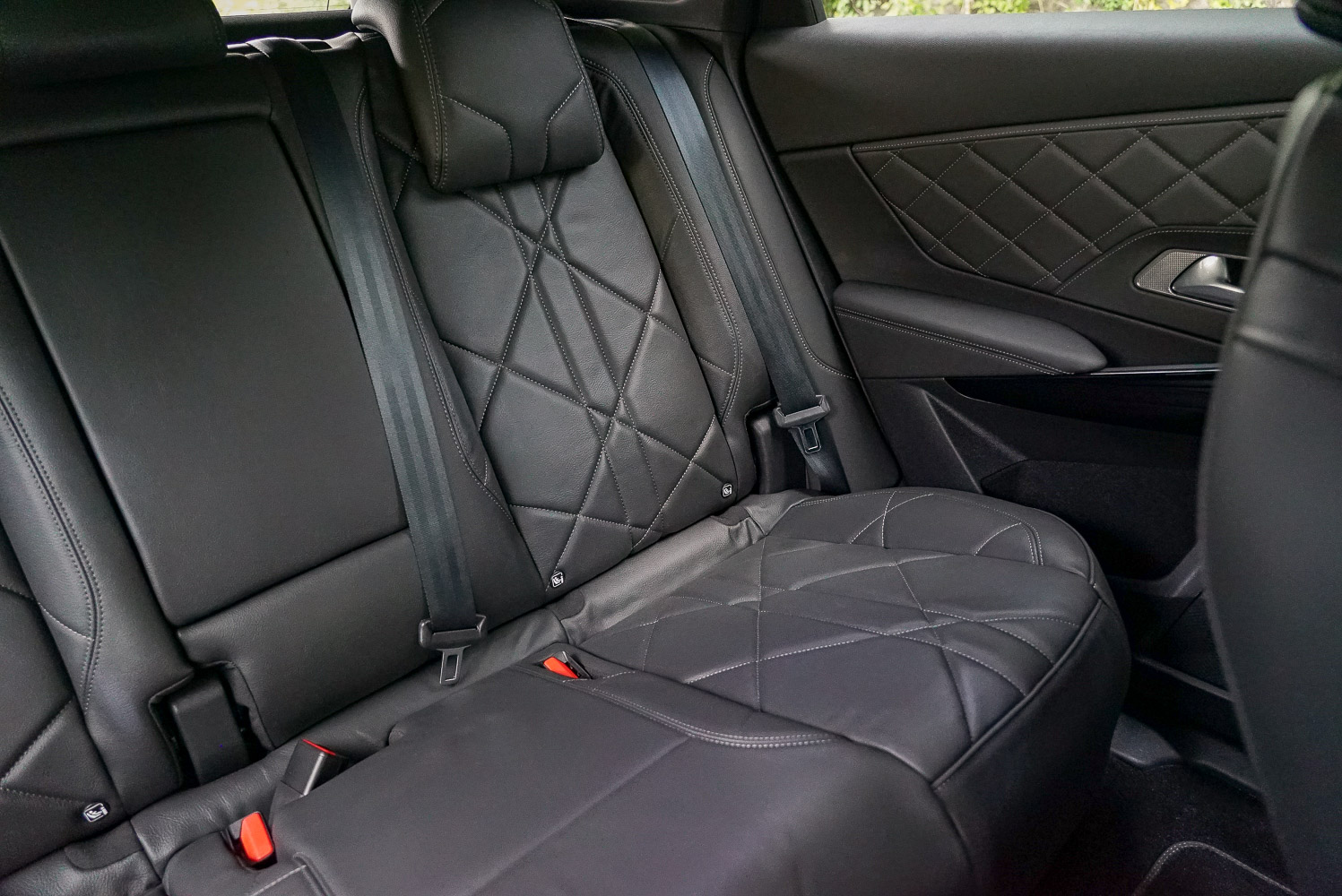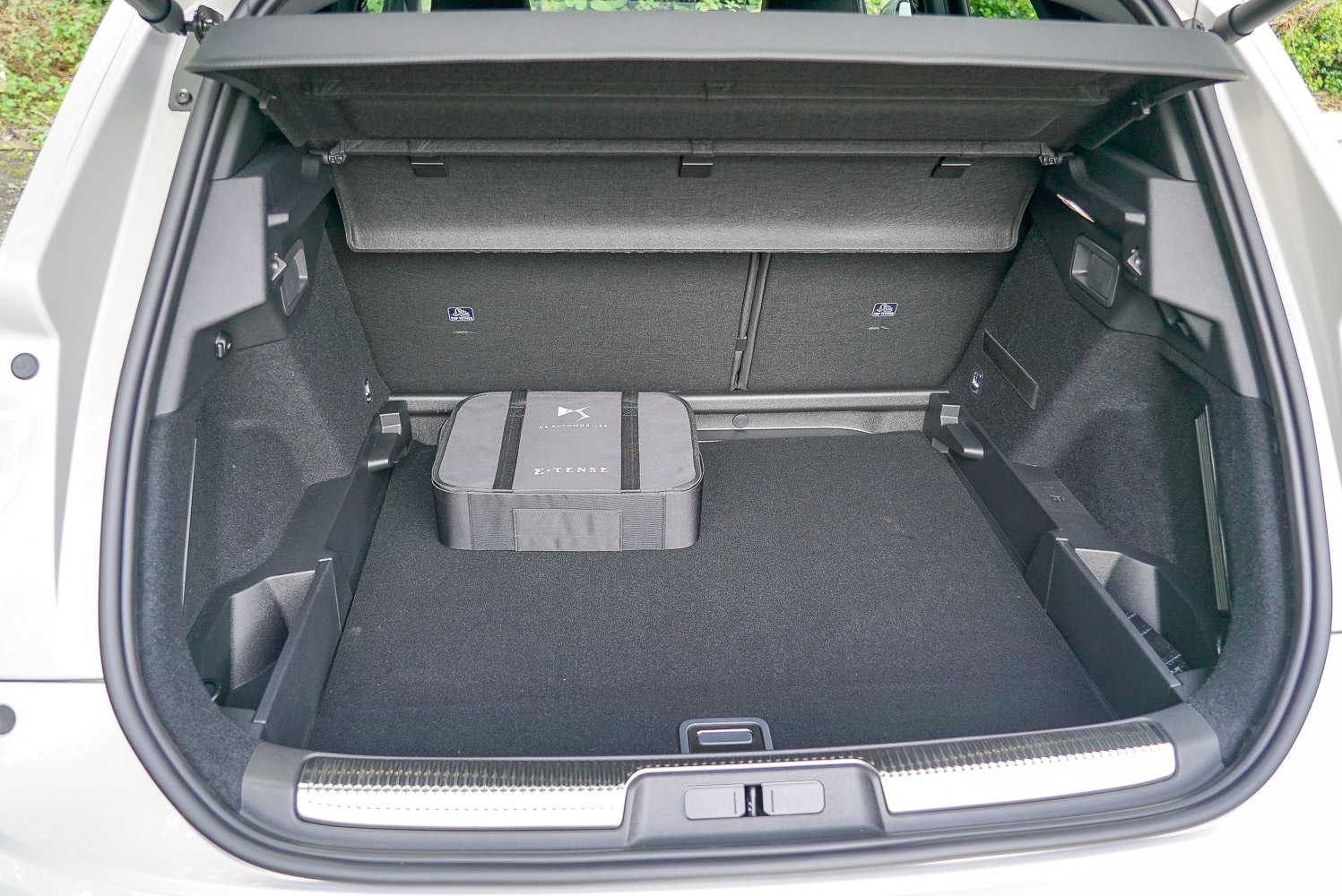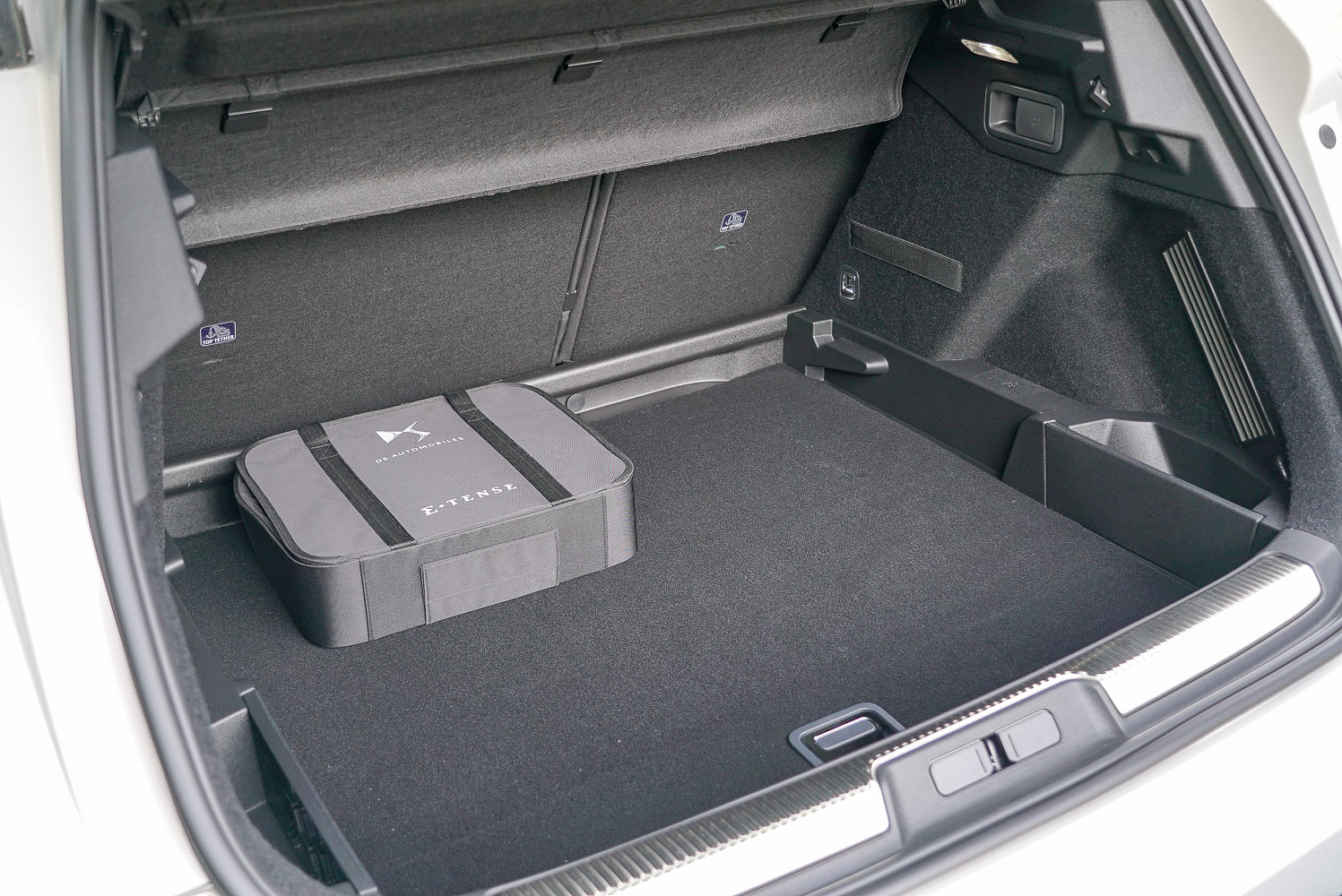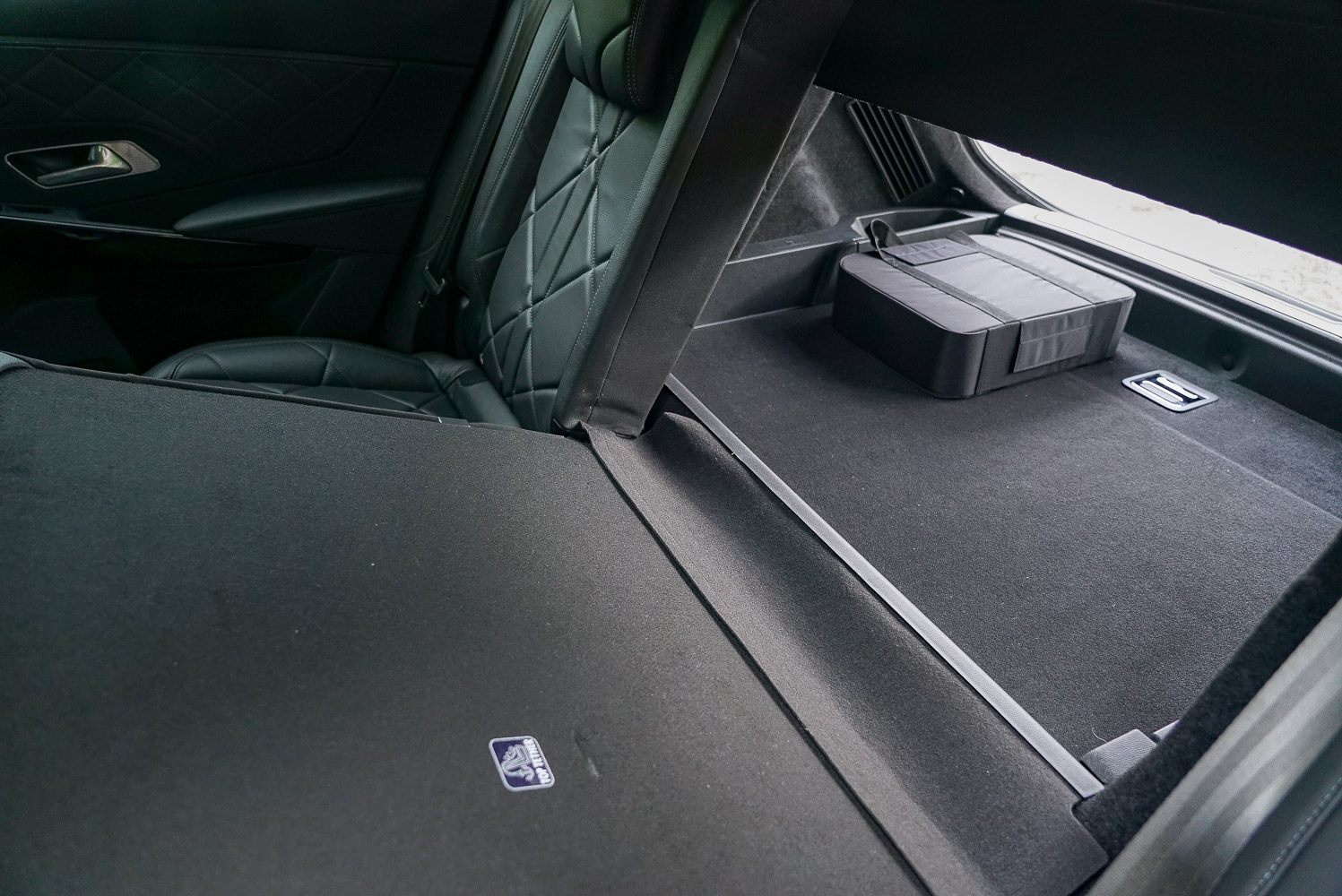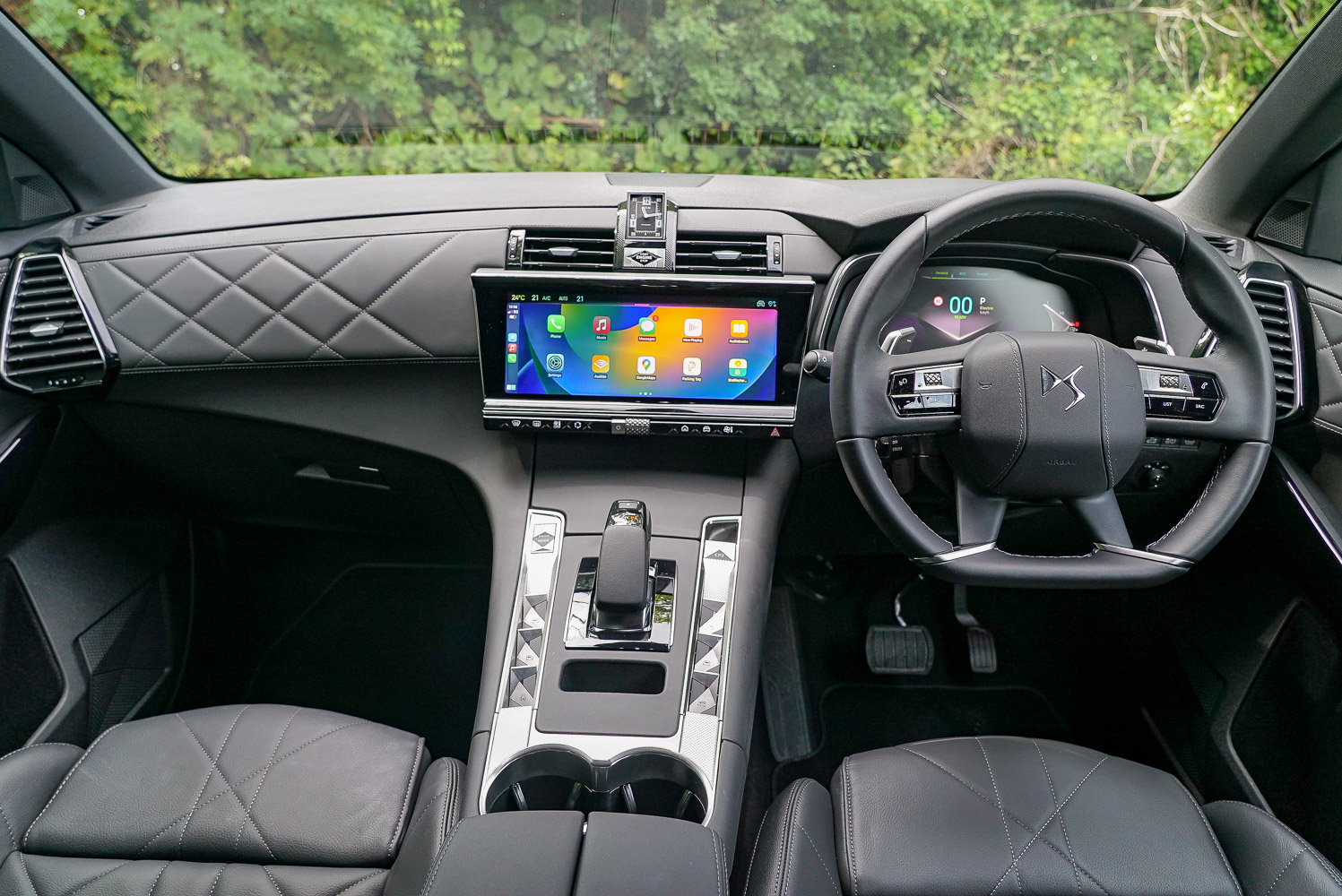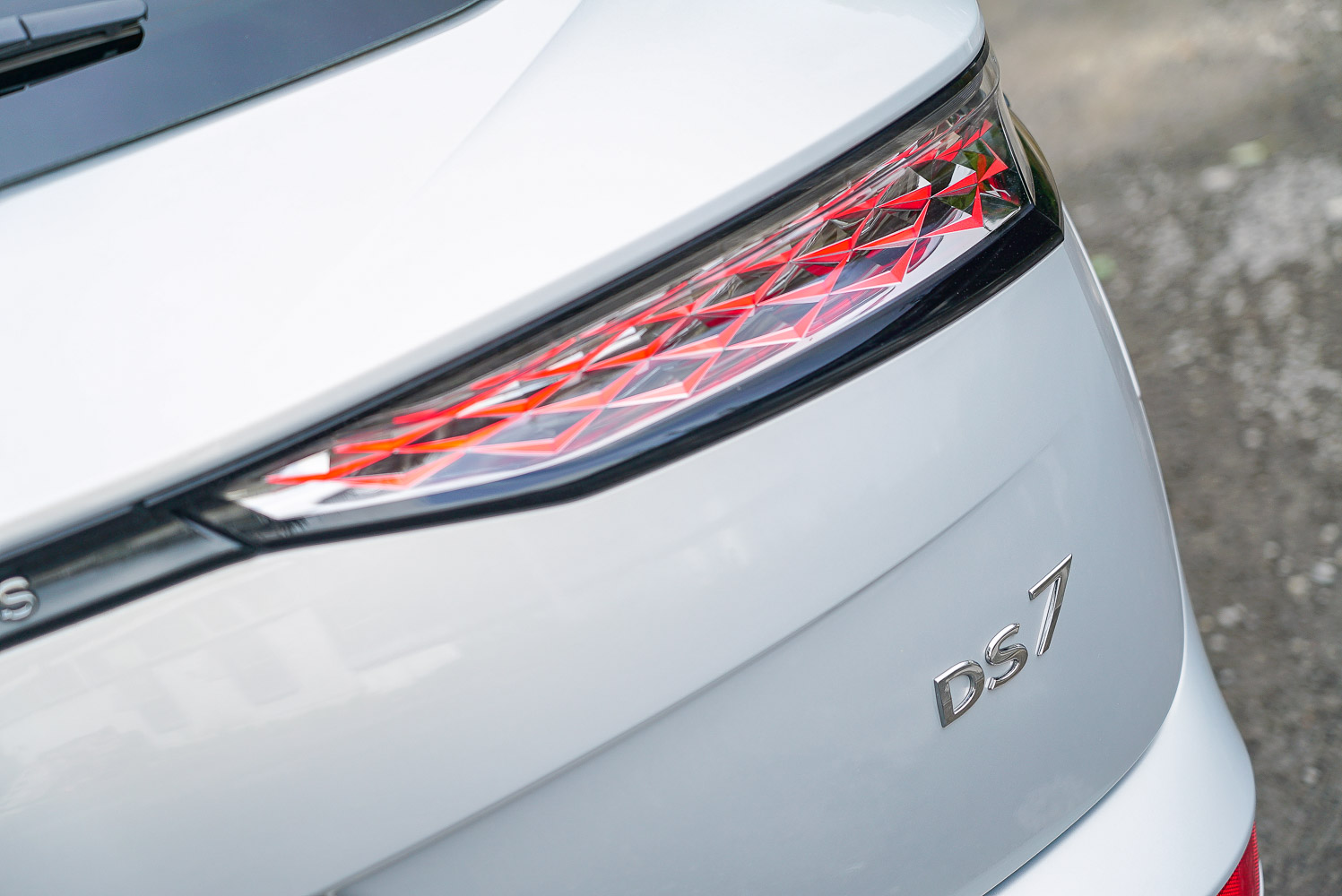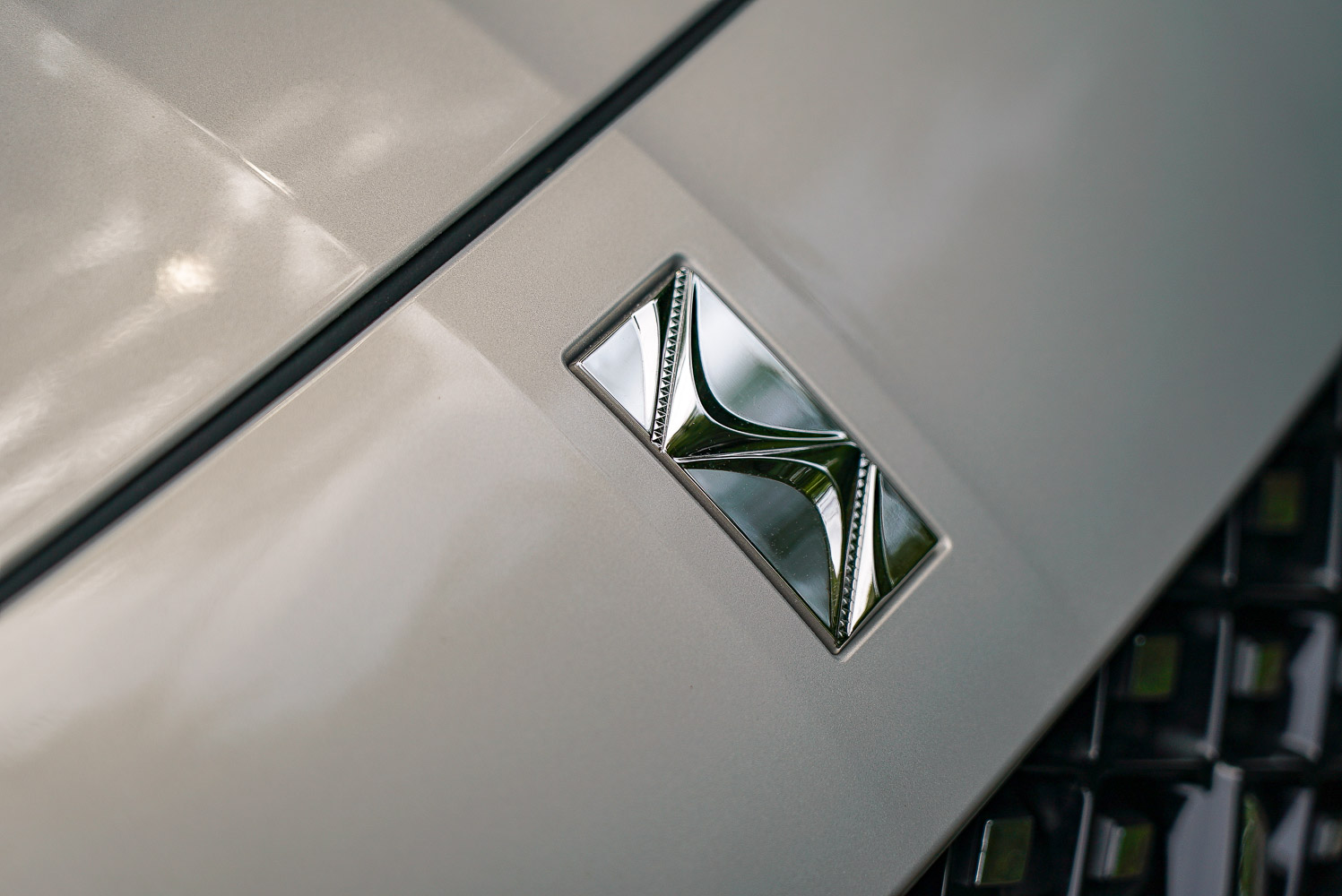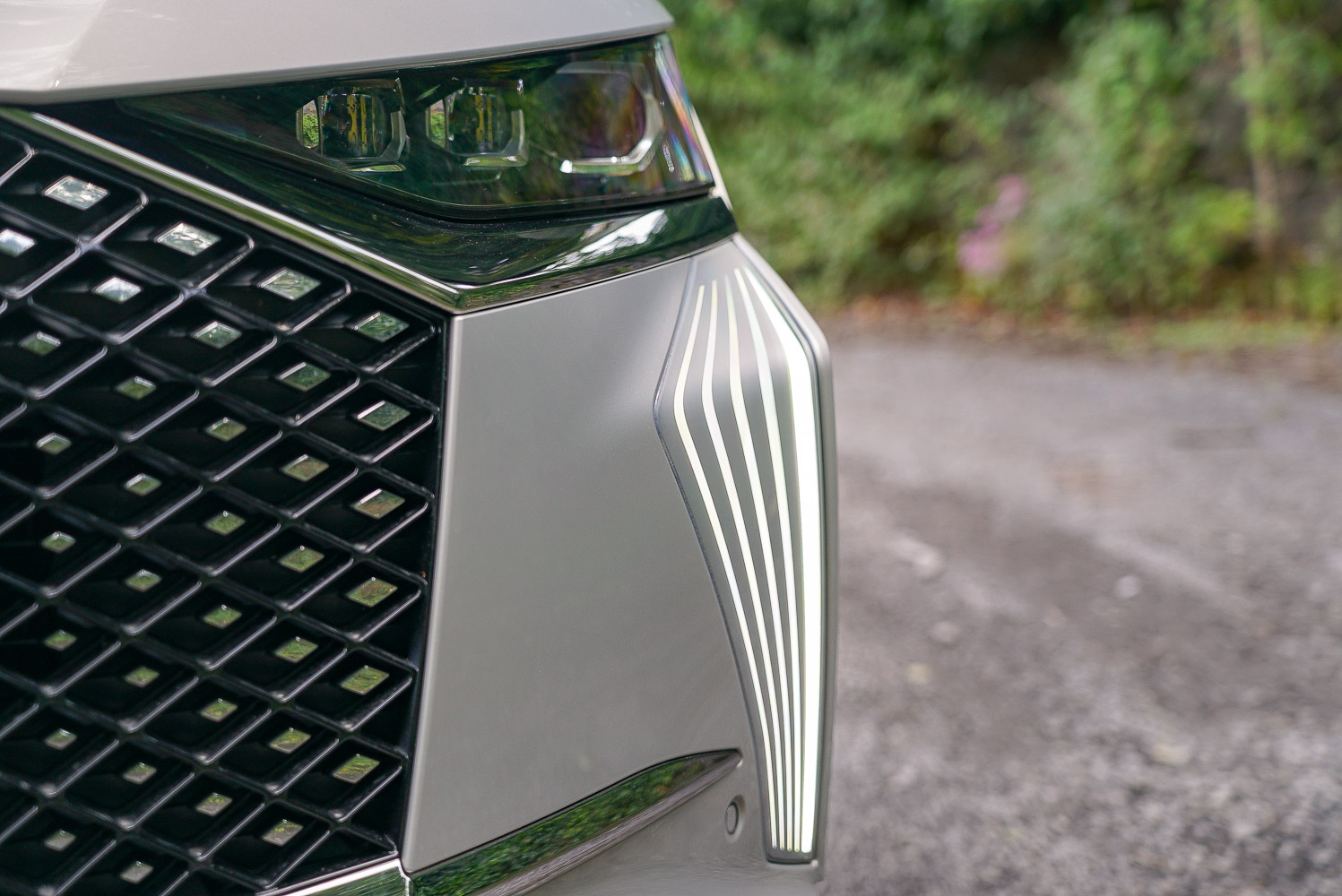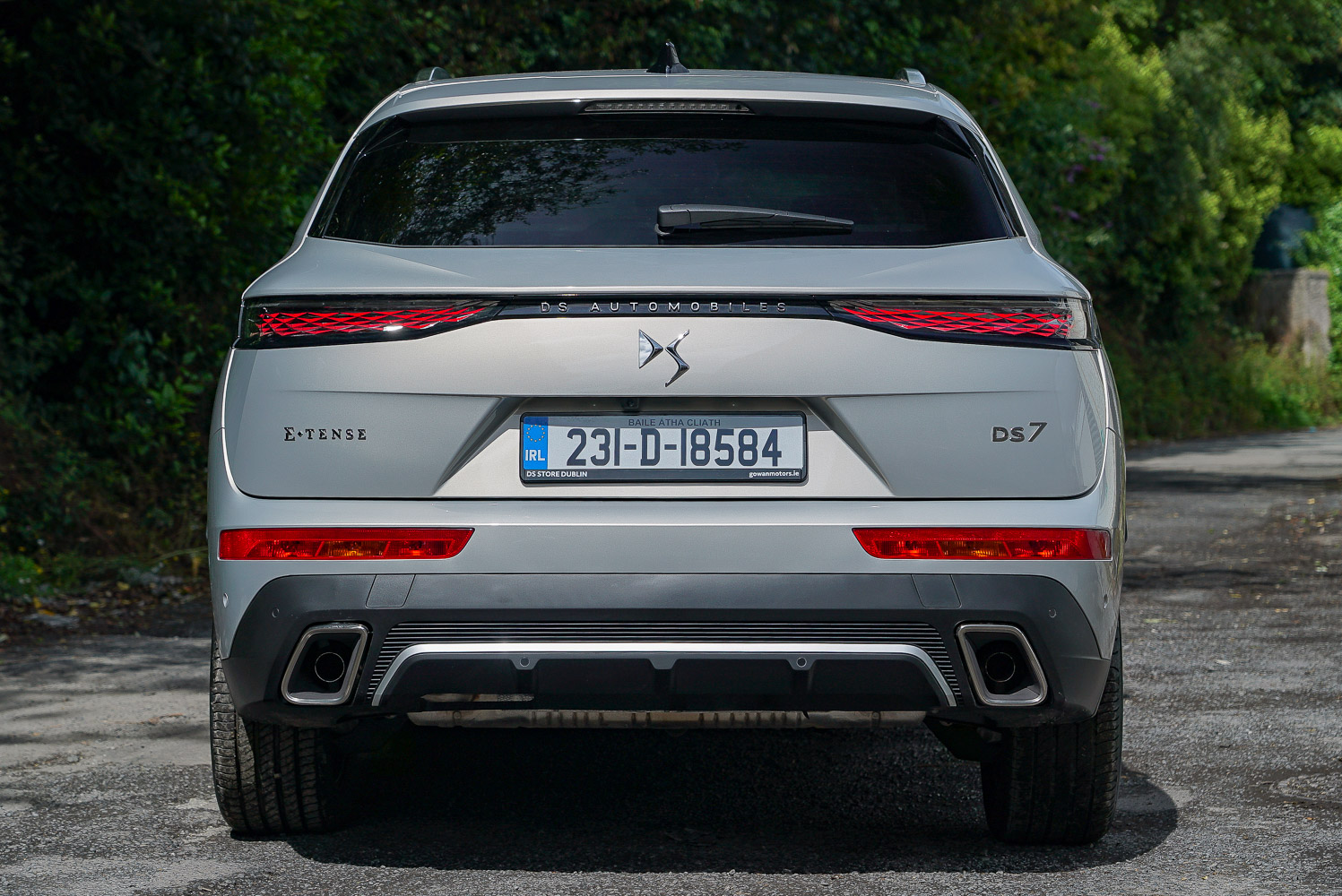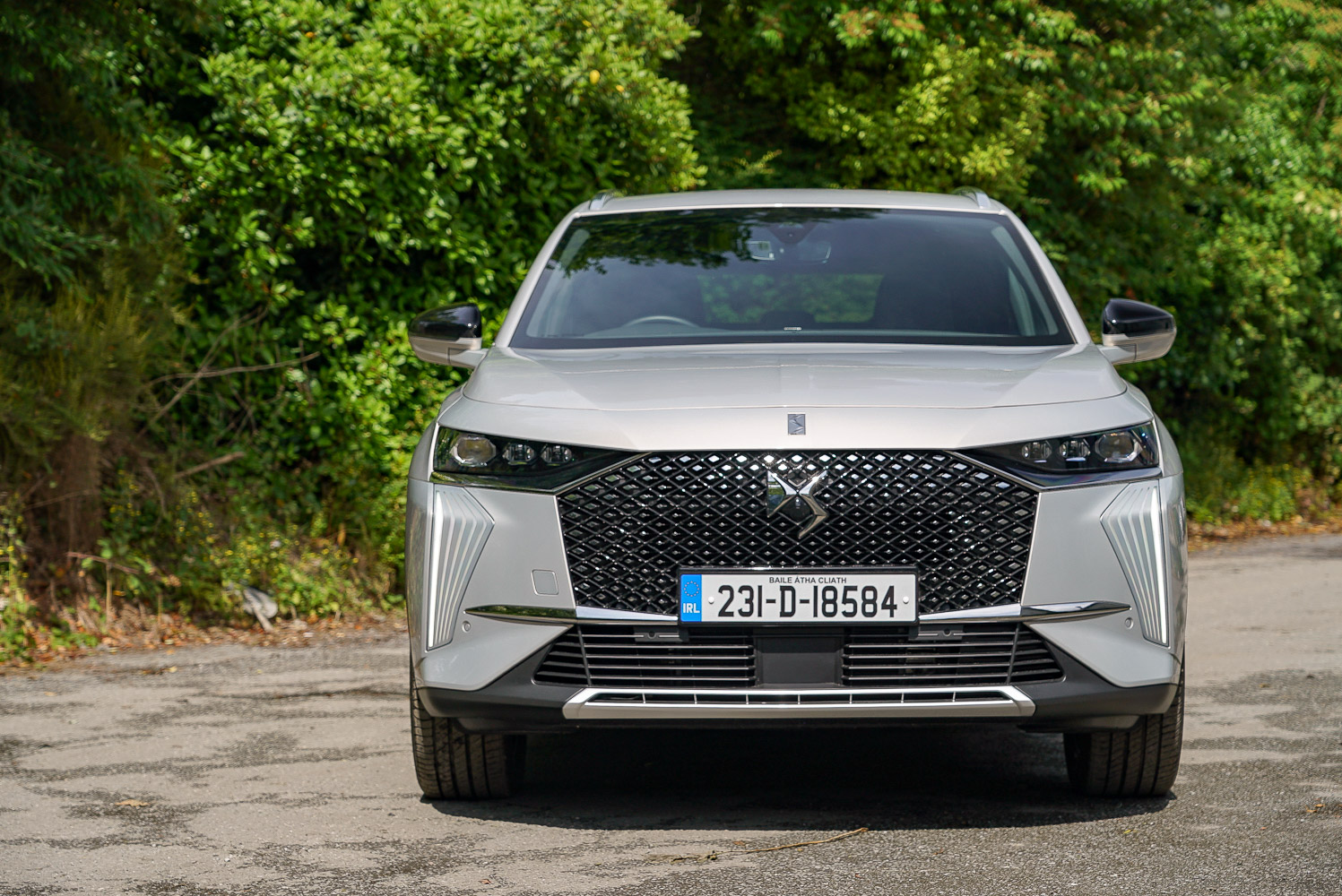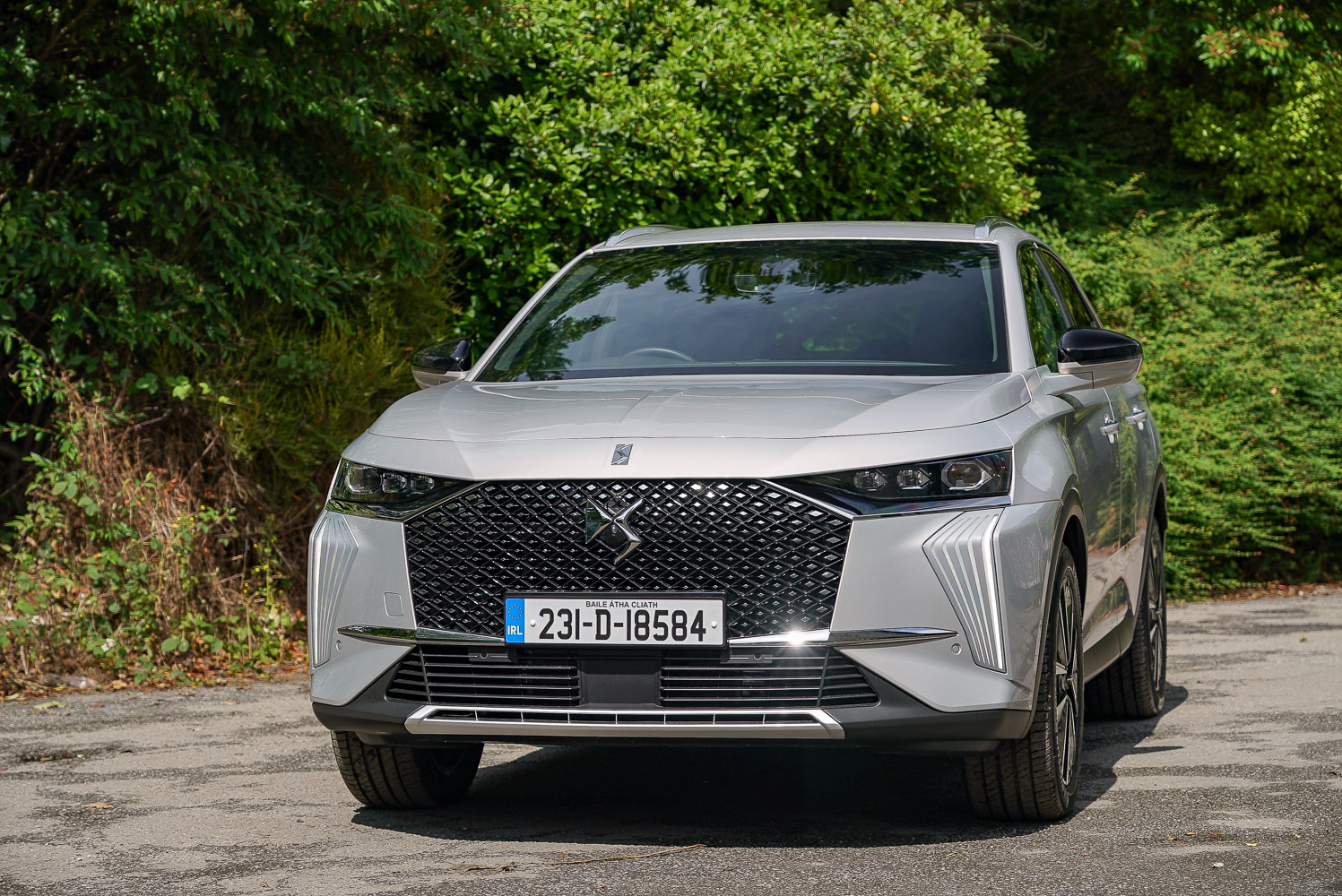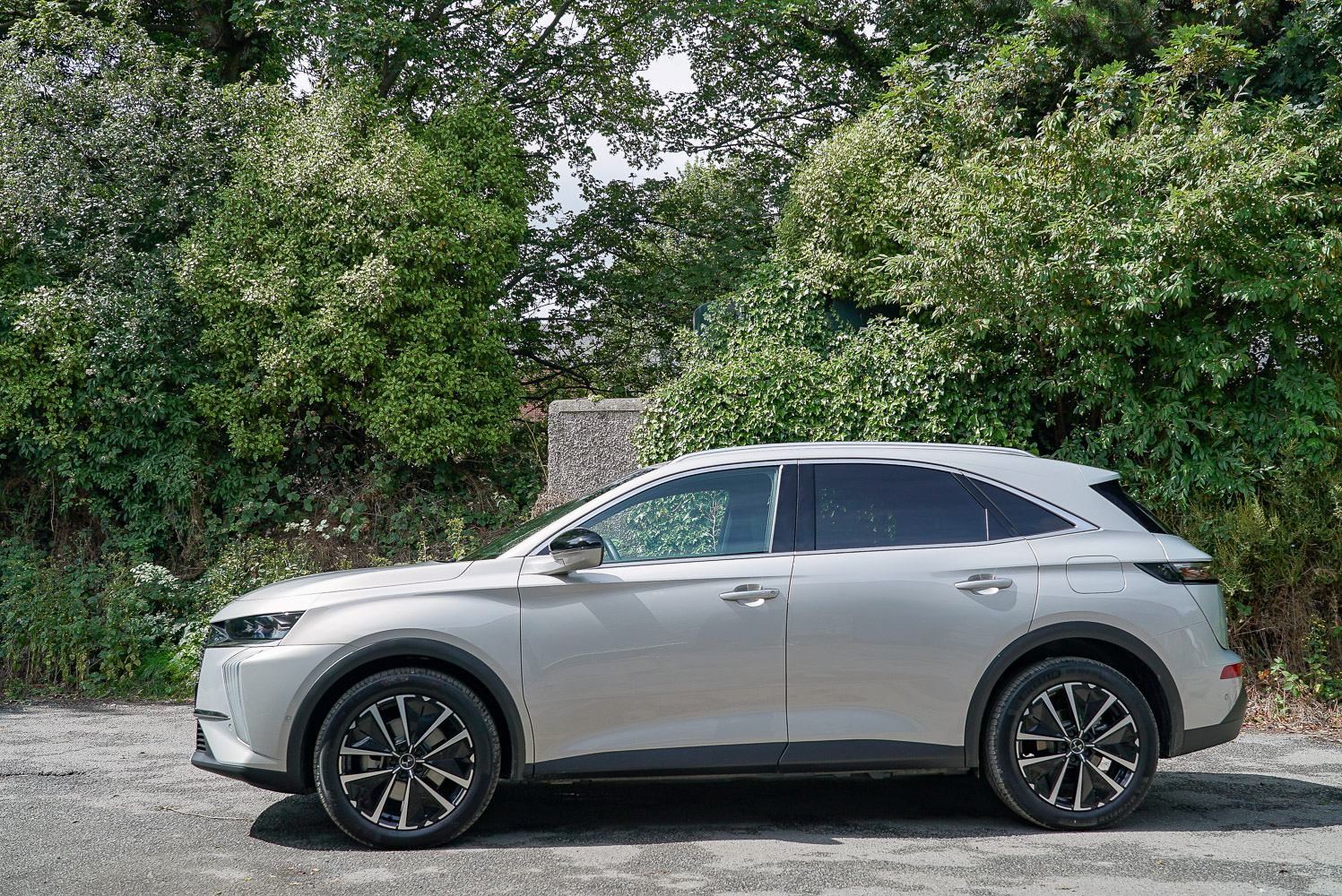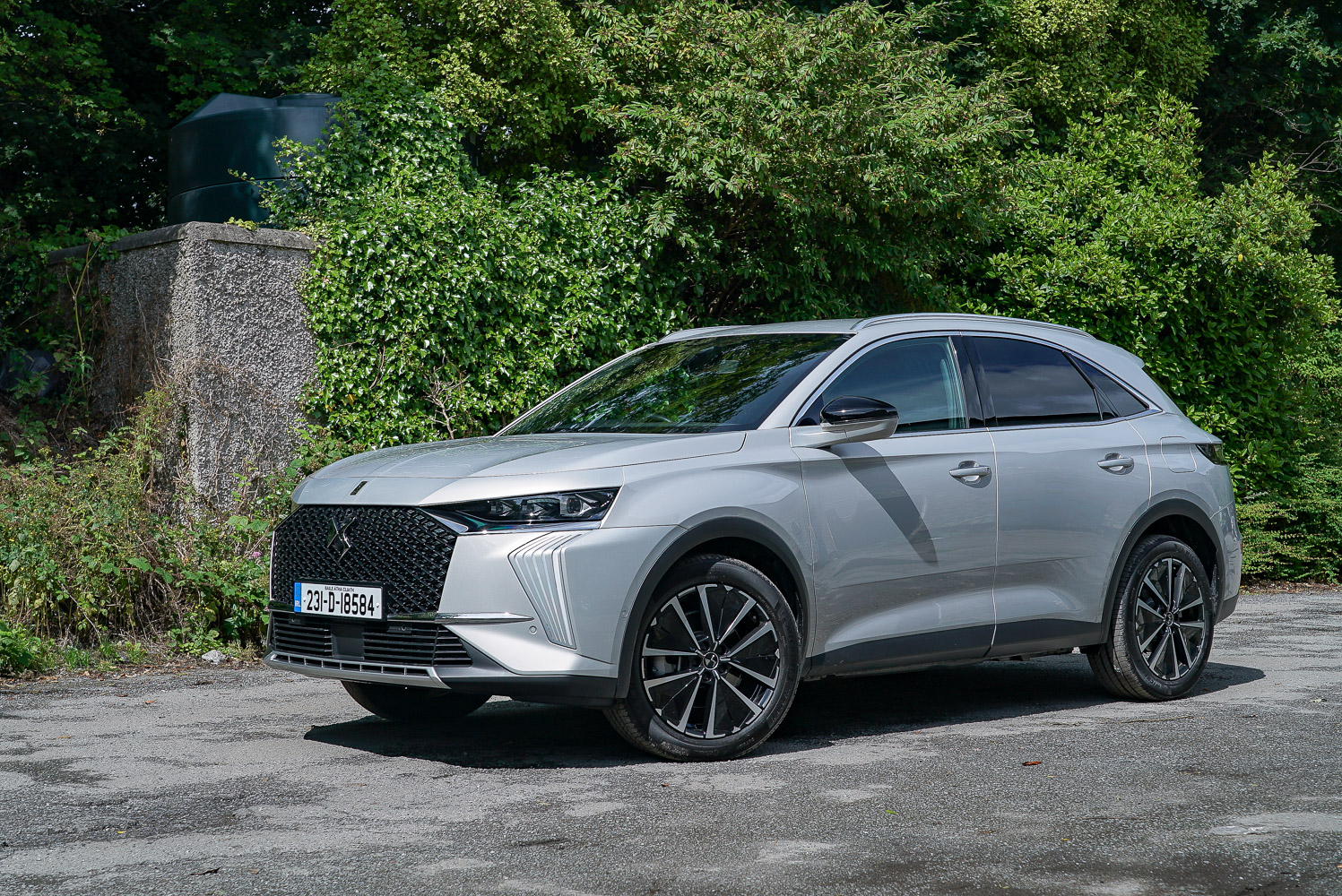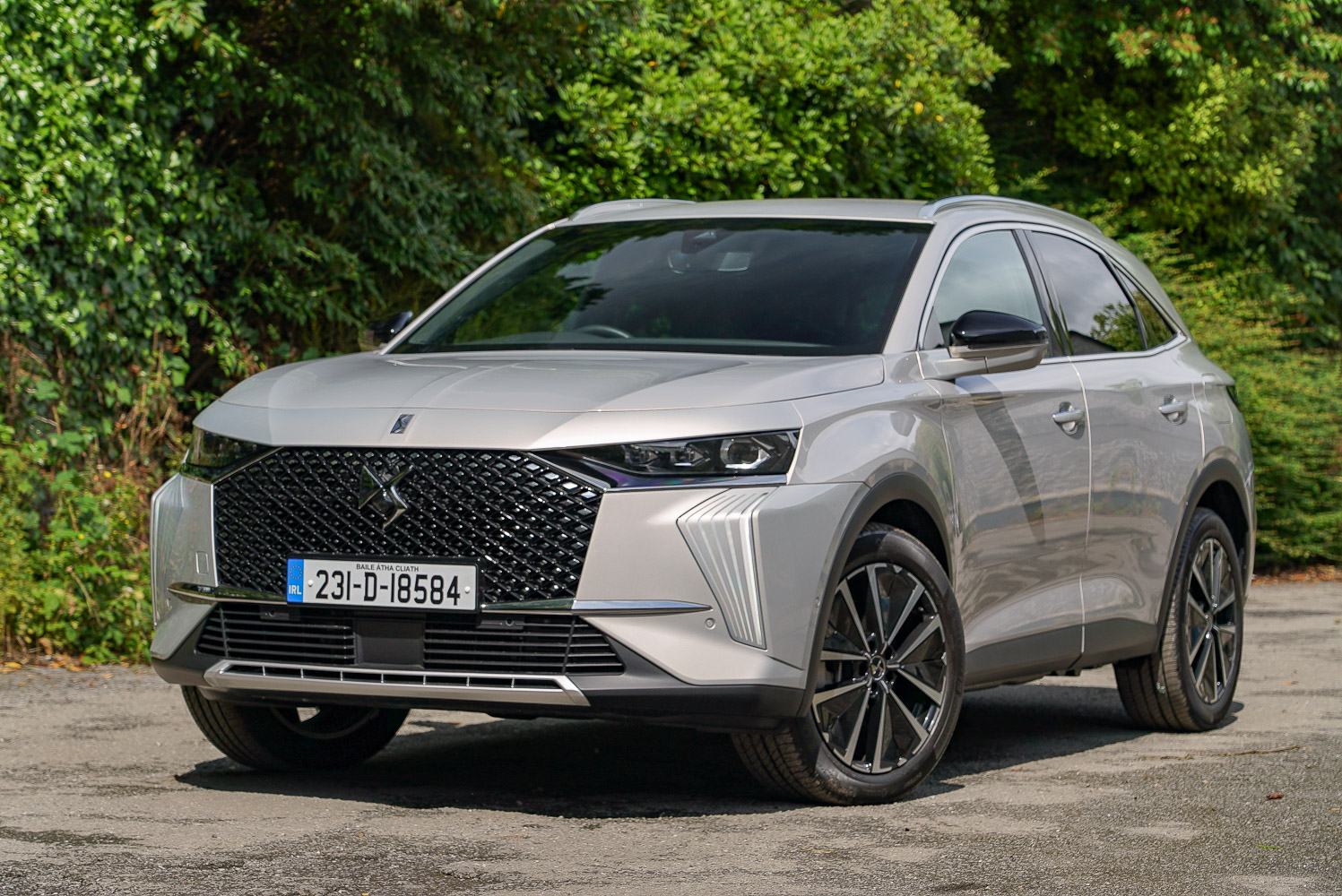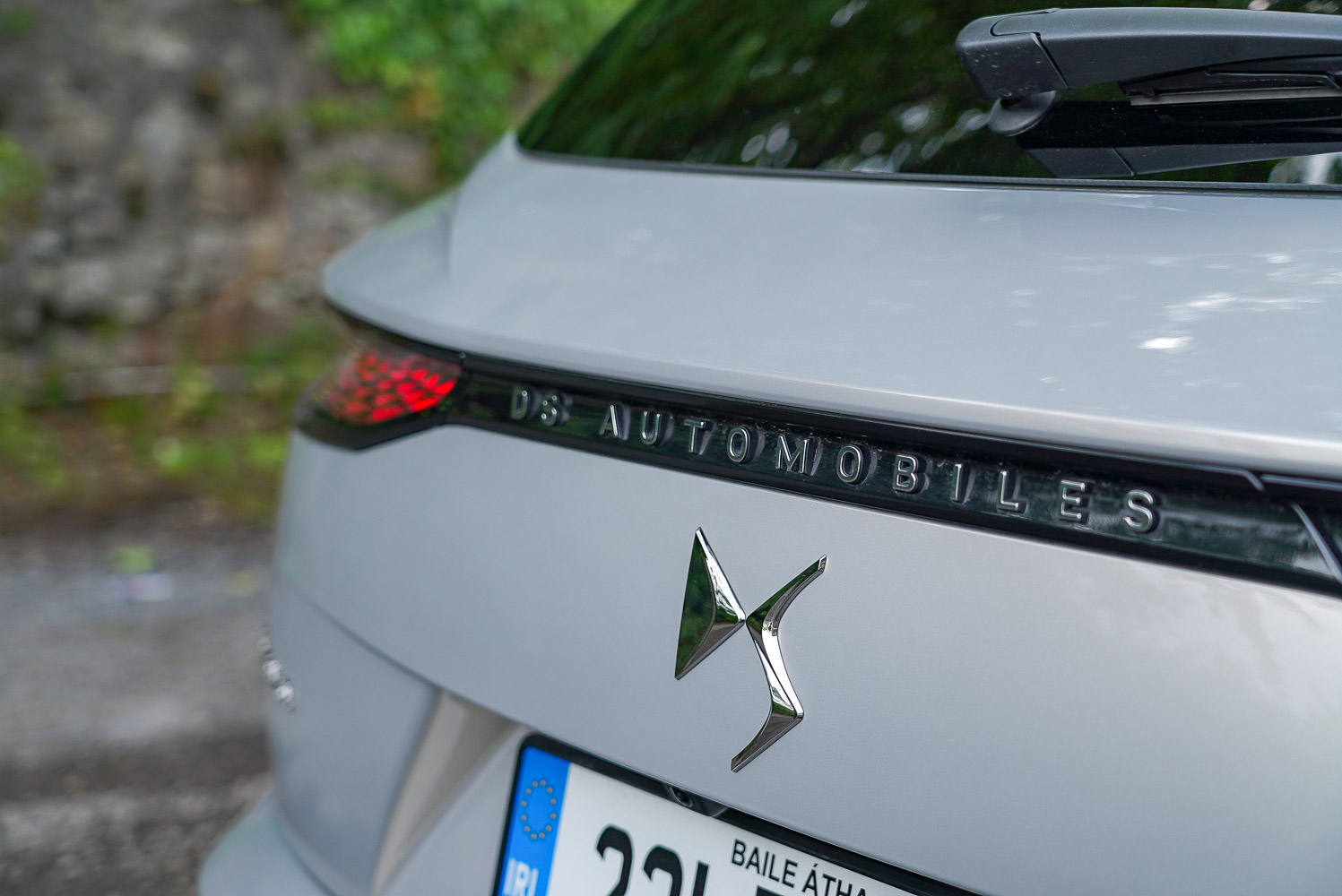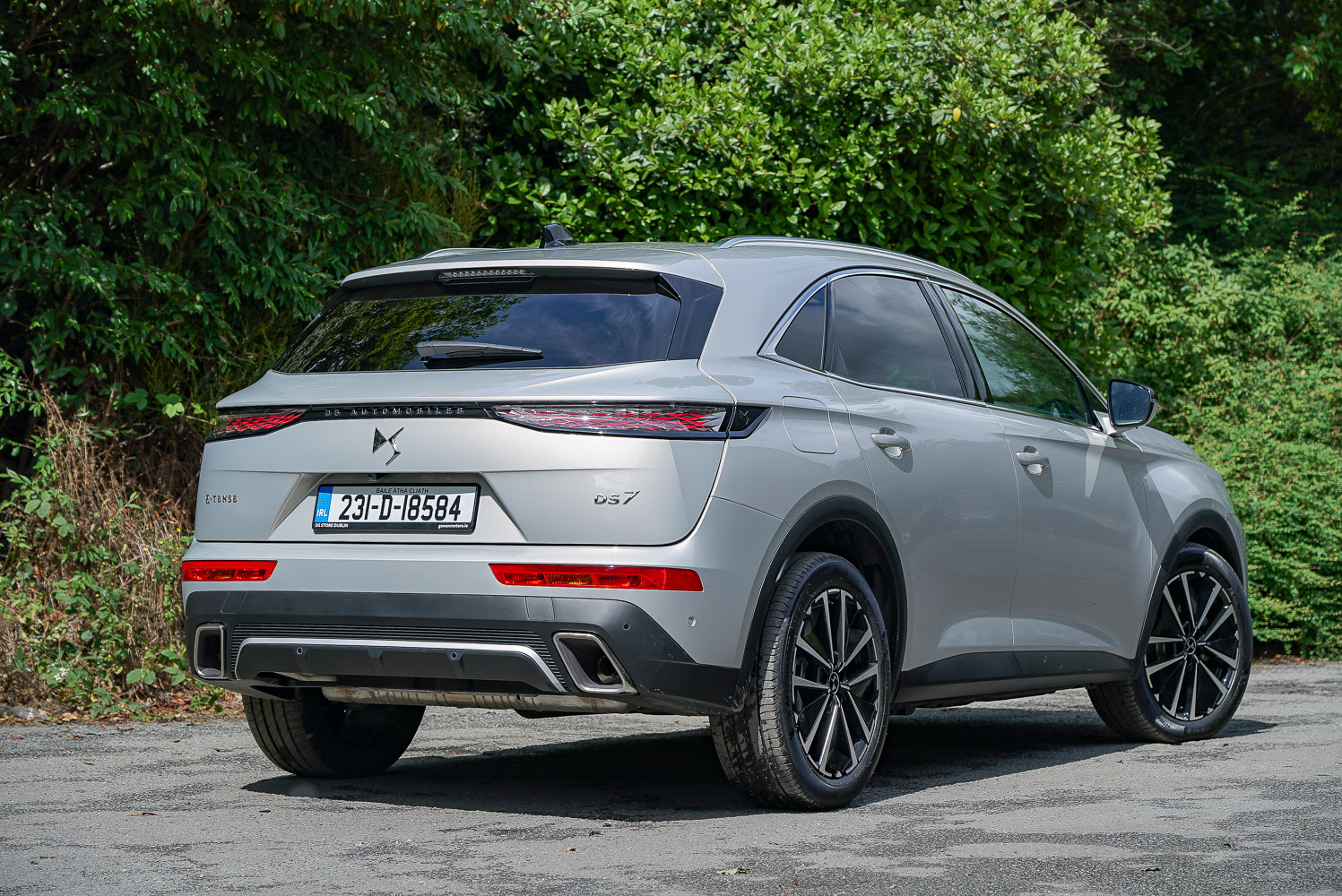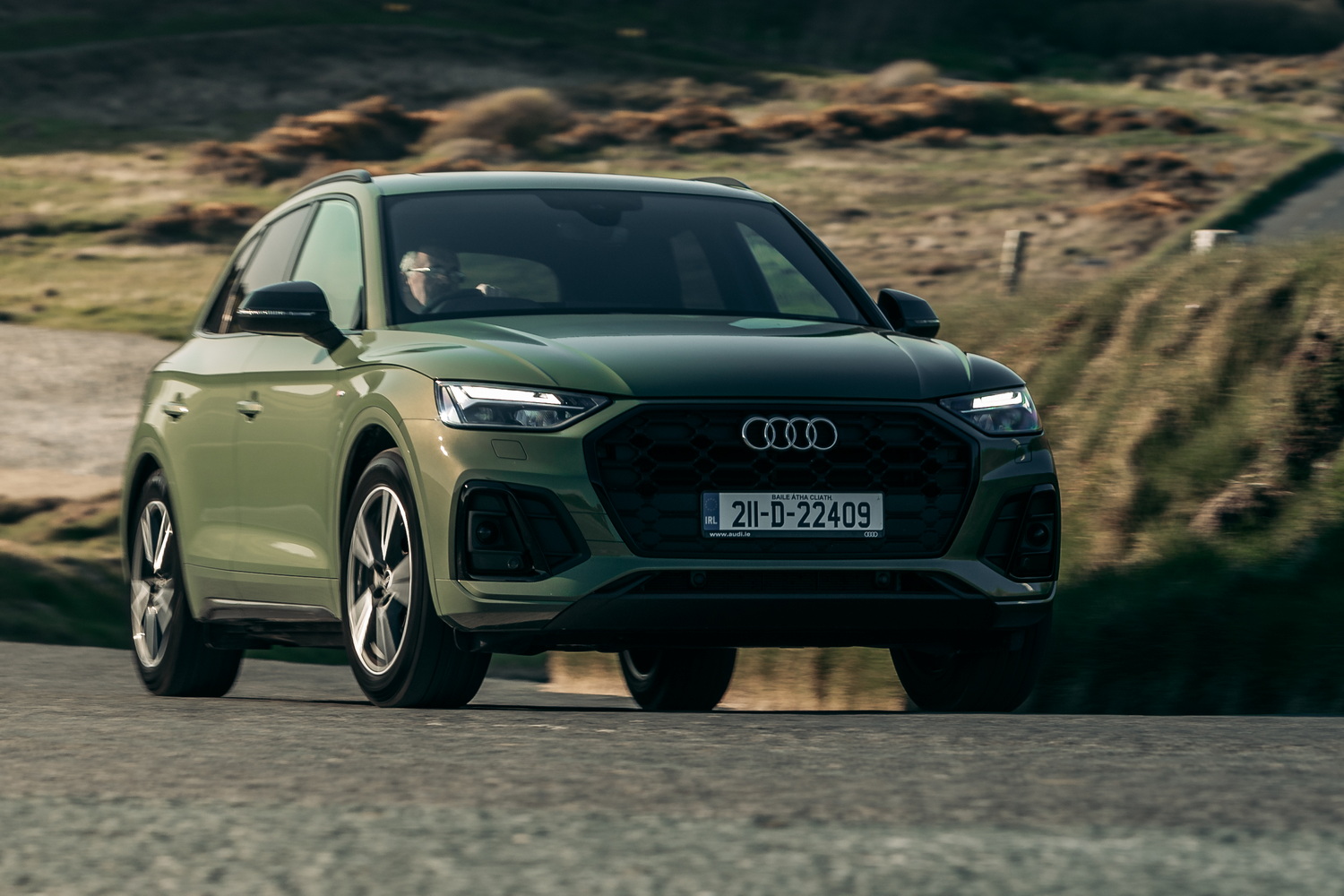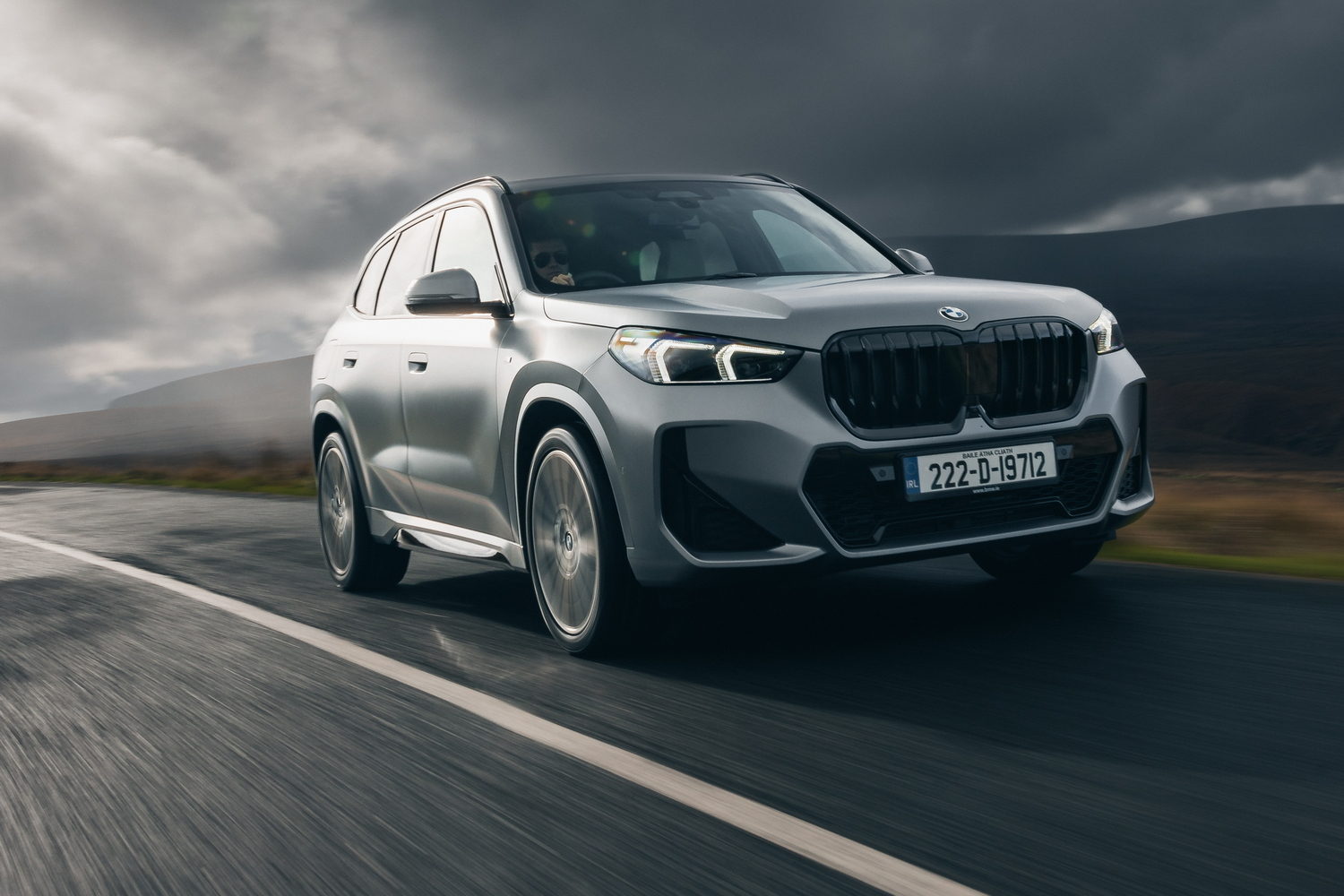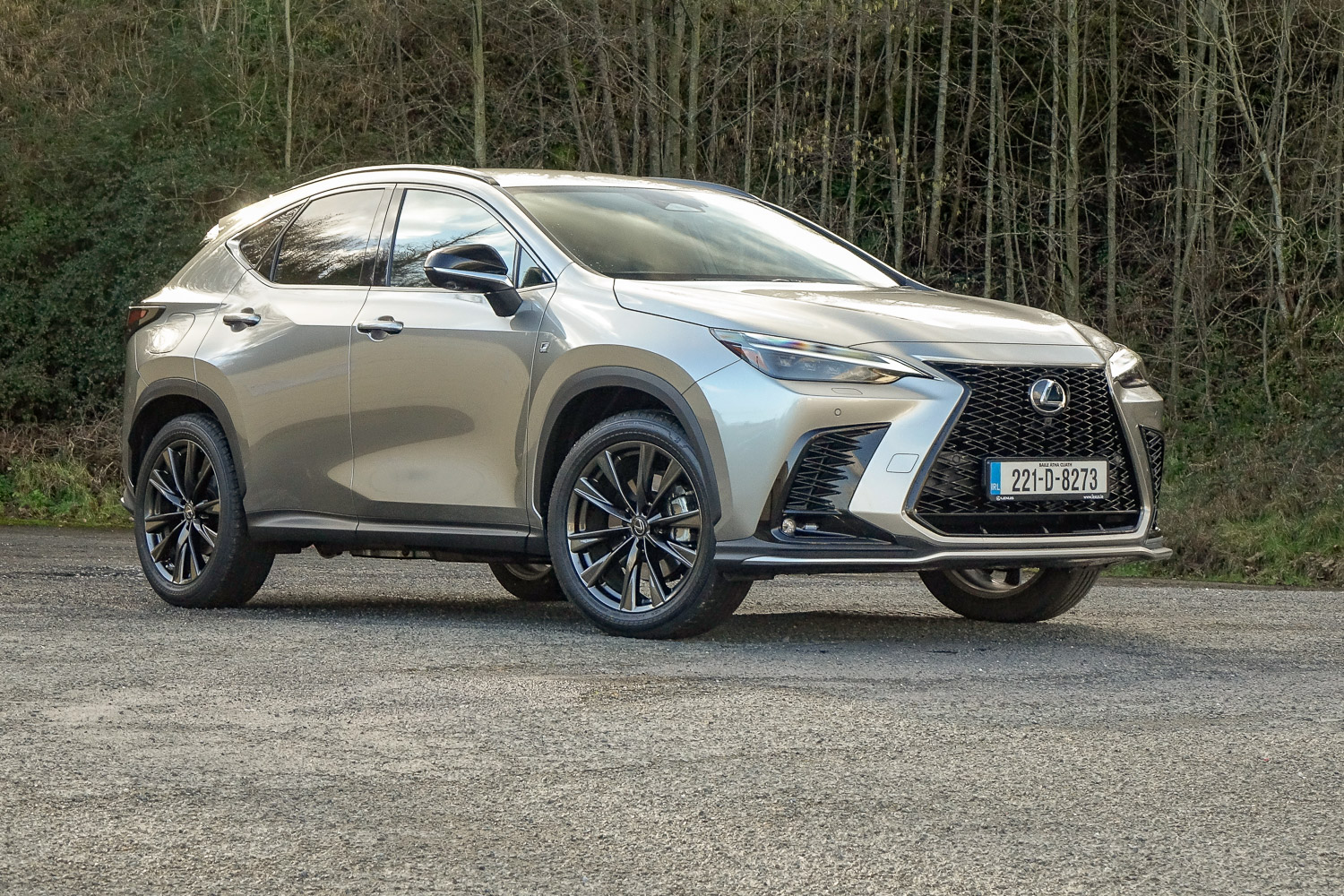DS 7 overview
The 7 is DS' rival for the likes of the Audi Q5 and BMW X3. Saying that, it's sized and priced between those cars and the likes of the Q3 and the X1, so it really acts as something of a rival for those cars too. The DS 7 has been on sale since 2017 (as the DS 7 Crossback initially), and has been updated once already, so this 2023 model-year upgrade is the car's second refresh.
The most obvious visual change is at the front, where you'll find new DS 'Light Veil' waterfall style LED daytime running lights which have been designed to make it appear that they're peeping out through the metalwork of the car. The radiator grille has been given a going-over too and is now bigger than before, while the lights are new Pixel LED Vision 3.0 units. These use three individual lighting modules behind a common lens, and give you up to 380 metres of high-beam vision at night.
Around the back, there are also revised LED lights, and the words 'DS Automobiles' spelled out in chromed letters on the rear hatch, just in case you were unsure of the car's provenance.
There's also a new plug-in hybrid powertrain option, although as yet there's no fully-electric DS 7 - that will come with the all-new DS 7 which launches in a few years' time.
So, does this latest round of revisions raise the DS 7 up to direct competition with Audi and BMW?
The DS 7 model range
The DS 7 line-up kicks off with the Performance Line grade, which is available either with a 1.5-litre BlueHDi diesel engine emitting 144g/km of CO2 - costing €51,785 - or a 225hp E-Tense plug-in hybrid, emitting 28g/km of CO2 and costing €59,185. Standard Performance Line trim includes 19-inch alloy wheels, Alcantara upholstery, a 12.3-inch digital instrument cluster, a 12-inch infotainment touchscreen, keyless entry and start, front and rear parking sensors, a rear-facing reversing camera and 3D connected navigation.
Next up is the Rivoli trim, which is the spec of our test car. Prices start from €56,790 for the 1.5 diesel or €63,195 for the 225 E-Tense plug-in hybrid, and there's now another powertrain option - a two-motor, four-wheel-drive plug-in hybrid making 300h, emitting 27g/km of CO2 and costing €67,195. Standard spec includes 'Basalt' black leather trim, a different style of 19-inch alloy wheel, a heated windscreen, a handsfree powered tailgate, more exterior chrome, electric seats, wireless phone charging and a dashboard clock made by BRM (a French purveyor of pricey wristwatches).
The top-spec model is the DS 7 Opera, which is only available a newly-introduced 360hp version of the four-wheel-drive plug-in hybrid system, and which costs €75,390 with CO2 emissions of 40g/km. Opera trim includes unique interior upholstery (also available in a pale 'Oyster' colour), 21-inch diamond-cut alloys, ventilated front seats, DS Drive Assist (an upgrade to the car's cruise control and lane-keeping steering systems), a panoramic sunroof, acoustic side windows, adjustable ambient cabin lighting and extended rear air conditioning.
Euro NCAP last crash-tested the DS in 2017, so it's likely that the car's score would be different today, but back then it racked up a full five-star rating, with 91 per cent protection for adult occupants, 87 per cent for child occupants and 73 per cent for pedestrian protection. All versions come with cruise control and speed limiter, two rear ISOFIX points, autonomous emergency braking, blind-spot monitor, lane-keeping assistance, traffic sign recognition and driver attention alert.
DS Automobiles Ireland currently offers the DS 7 on a PCP plan with repayments starting at €499 per month, assuming a deposit of €15,300 and a balloon payment of €22,785, but make sure to check out dsautomobiles.ie for the most up-to-date offers.
The DS 7 interior
Emphasis on the inside of the DS 7 is on luxury and comfort, which is only appropriate both for a high-end French car and for a car trading on the glories of the DS badge. This Rivoli-spec test car gets some lovely diamond-quilted leather trim on the seats, doors and dash which gives the car an almost Bentley-like aspect inside. Those seats are wonderfully comfortable too, and the driving position is good.
Oddly, the DS 7 sticks with the older grab-handle-like automatic gear selector, rather than using the more recent metal toggle switch that we've seen in various Stellantis Group models, but it's still effective. The main cabin switches for the electric windows and door locks are lined up on the centre console, either side of the gear lever. These, as with the rest of the cabin's bright trim, get a diamond-like faceted design, which looks great, but which does make it a little hard to find the right switch in a hurry.
There's plenty of storage, with two good sized cupholders by your elbow, and a large, lidded storage area under the central touchscreen. The door bins are also a good size and, as well as a large storage box under the butterfly-style front armrest, there's a smaller, rubber-lined, storage tray just by the gear lever which is perfect for loose change or keys.
The big infotainment screen marks an improvement over what went before, thanks largely to spiffy new software that's much easier to use and has menu layouts which are far less baffling. There's wireless smartphone mirroring (just as well, as there's only the one USB socket up front) and the graphics looks mostly rich and expensive. However, it's a mistake to put all of the heating and ventilation controls on the screen, as that makes them too fiddly to use, even if there are a couple of physical shortcut buttons below the screen.
The driver's instrument display is again a very good one and comes with graphics that are equally rich-looking and easy on the eye. You can alter the layout through five different themes, but there's only limited opportunity to set the screen up precisely as you'd like it.
Quality levels are very good indeed - the leather trim in particular is wonderfully soft and inviting - but I'd say it's still a half-step behind the best of the Germans, or Lexus, in terms of perceived quality.
Rear passengers are well catered for. The seats in the back get the same diamond-leather quilting, and there are two USB sockets, useful seatback storage nets and good door bins. There's also plenty of legroom, and headroom is decent. There are cupholders in the folding rear armrest, and just about enough space in the centre rear seat to make it useable. The only downside is that the relatively shallow side glass and the way the C-pillar wraps around into the door tops means that the back can feel a touch dark. The tinted privacy glass doesn't help.
The boot holds a very useful 555 litres, unencumbered by the plug-in hybrid battery packaging. You can fold down the rear seats to open up a large 1,752 litres of space although the rear seats do still sit up at quite a bit of an angle when you do so.
The DS 7 driving experience
DS has clearly benchmarked the 7 against the likes of the Audi Q5 and BMW X3 in setting out its chassis setup and balance, and it has come closer than perhaps the Germans would care to admit. I have to confess that I'd personally prefer it if DS went the other way, and sent the 7 down the path of the original DS and SM, and made it really, really soft with the sort of loping suspension that just soaks up long journeys.
Of course, such a setup would be anathema to most modern car buyers, who demand that their new SUV lives up to the S-for-Sport bit. In doing so, DS has struck a reasonable compromise between agility in corners and comfort everywhere else. Our test car came with the DS Comfort Scan Suspension, which uses a camera to watch and analyse the road ahead, telling the adaptive suspension dampers what's coming up so that they can tighten up or relax accordingly. It's a clever system, and works mostly well, albeit there's no getting around the fact that this is a relatively tall, relatively heavy SUV with low-profile tyres, so a bit more bump-thump does come through than is ideal.
The 7 has nicely-weighted steering, if lacking in feedback, and while it does respond well to being chucked down a country road, it's definitely happier on roads with longer, more open corners. On motorways, it excels, cruising along in tremendous comfort and refinement.
If there is a weak link, it's in the plug-in hybrid powertrain. Based around a long-serving 1.6-litre turbocharged four-cylinder petrol engine, this setup provides a very decent 225hp and 360Nm of torque, so the DS 7 can feel quite indecently frisky for a mid-sized SUV. It also has good electric performance, with the potential for a very useful 69km of electric-only range on a full charge. It's going to be more like 50-55km in real-world conditions, but that's still decent, and the DS 7 suits electric power as the combo of solid cabin quality and good noise suppression means it's very smooth and refined around town with the engine off.
It's a shame that the combination of the 1.6 turbo and the eight-speed automatic gearbox doesn't result in a rosy marriage. Too often, a prod of the accelerator pedal results in a sudden two-gear kickdown that leaves the engine thrashing too noisily when all you wanted was a couple of extra km/h. It's a calibration issue we've noticed in pretty much all the Stellantis Group cars (from Peugeot, Citroen and Opel) which use this hybrid and it's a shame, as it can spoil the mood somewhat.
At least long-range fuel economy is OK. It will creep up to the wrong side of 7.0 litres per 100km if you're really racking up the motorway miles without charging up the battery, but more mixed driving should see a return of around 6.5 litres per 100km, which is fine. Obviously you'll improve on that if you're fastidious about plugging it in.
Our verdict on the DS 7
The updates to the DS 7 keep it competitive with the best that the Germans and Japanese can offer, but you do get the feeling that it's something of a placeholder for some much more exciting, all-electric, DS models coming soon. Still, as an alternative to the too-predictable mainstream, it's smooth, refined, comfortable, pleasant to drive and very handsome.
What do the rest of the team think?
This update to the DS 7 seems to be more than the sum of its parts, as it doesn't look drastically different to the DS 7 Crossback it replaces, yet it's somehow a little more handsome and desirable than before. The interior is uniquely styled and also spacious, practical and of decent quality, while the driving experience is much better than average. So long as you keep the battery topped up so you can drive on electric power as often as possible, it's a car that lives up to its 'French luxury' billing and it certainly makes a refreshing change to the default SUVs in the sector.
Shane O' Donoghue - Editor

